Full text
PDF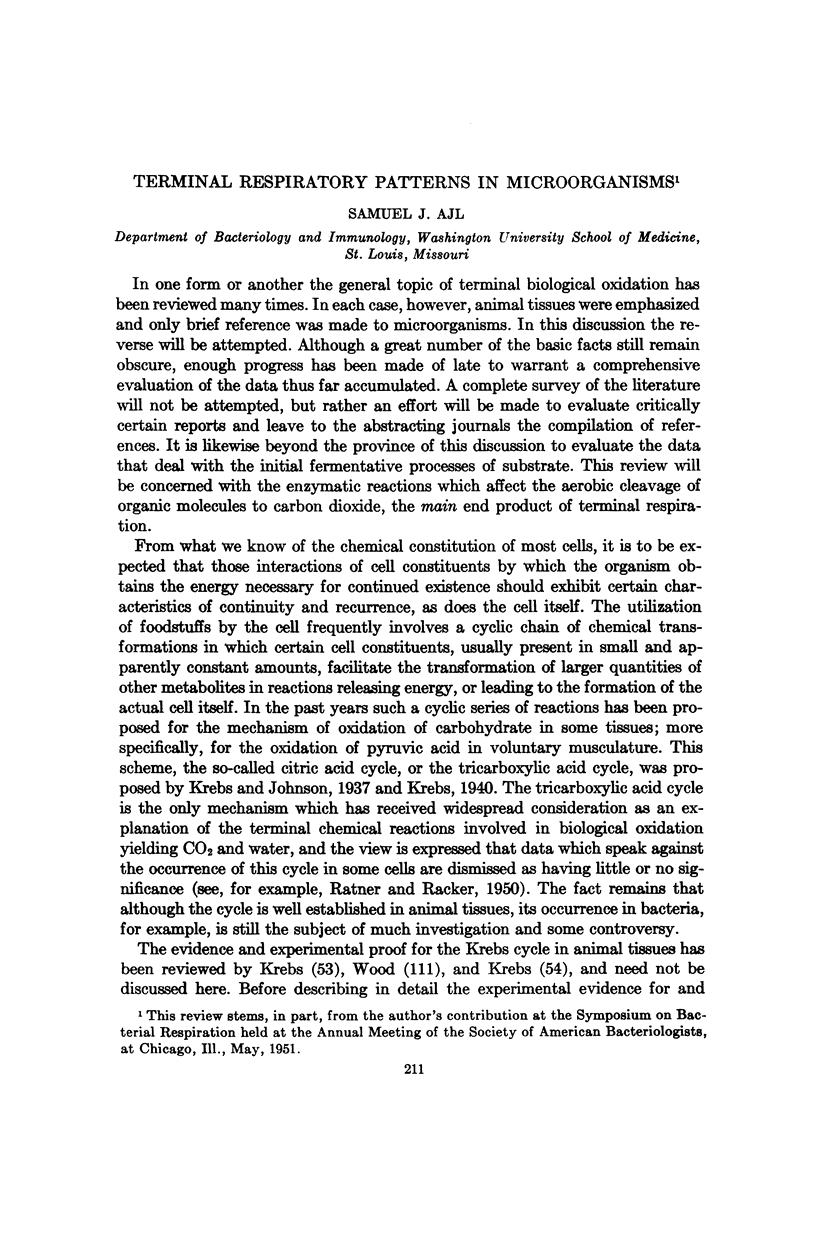
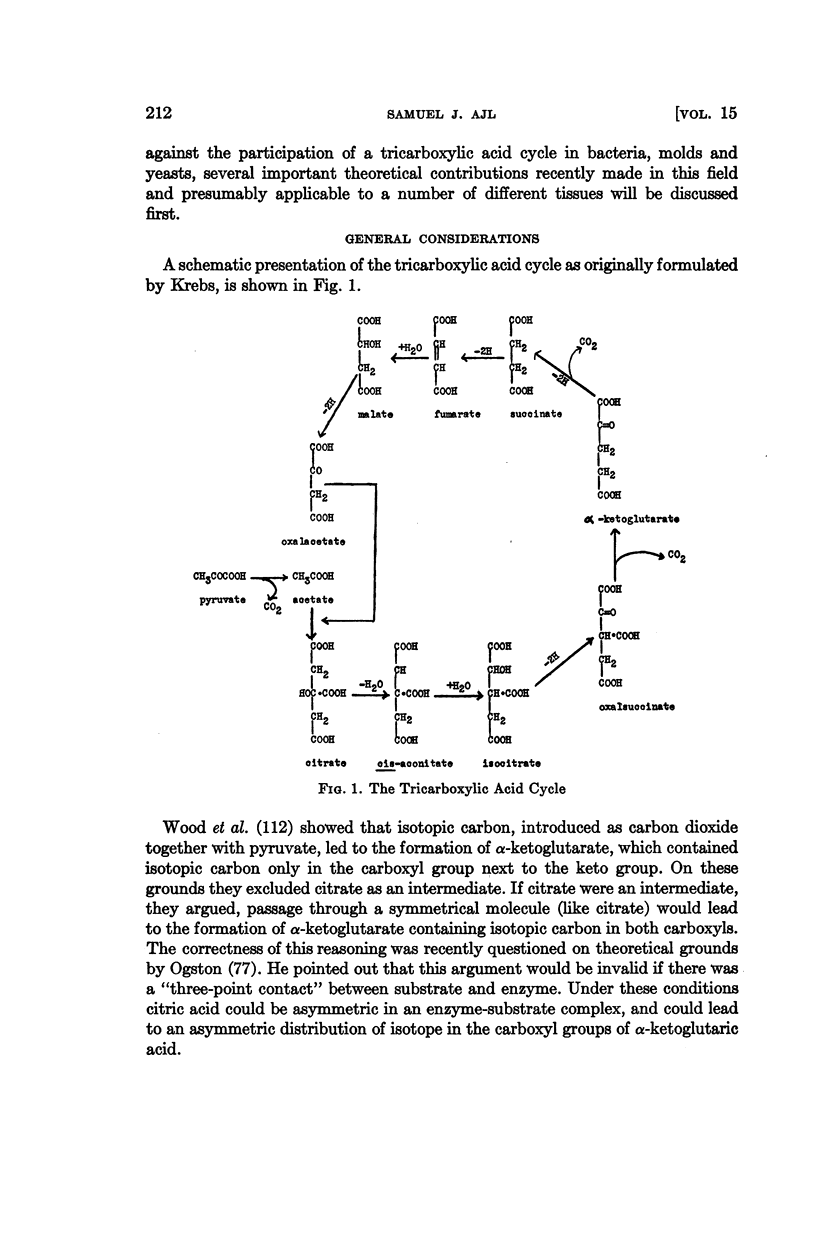
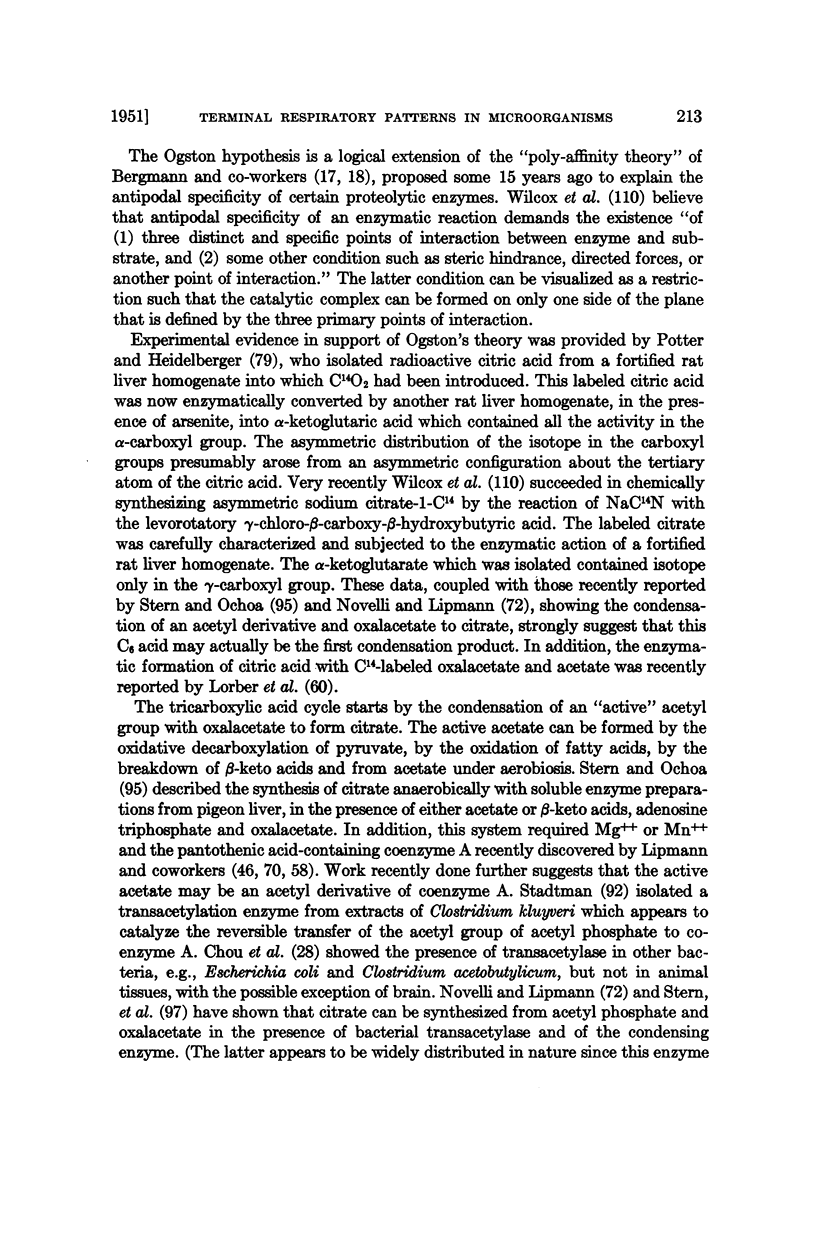
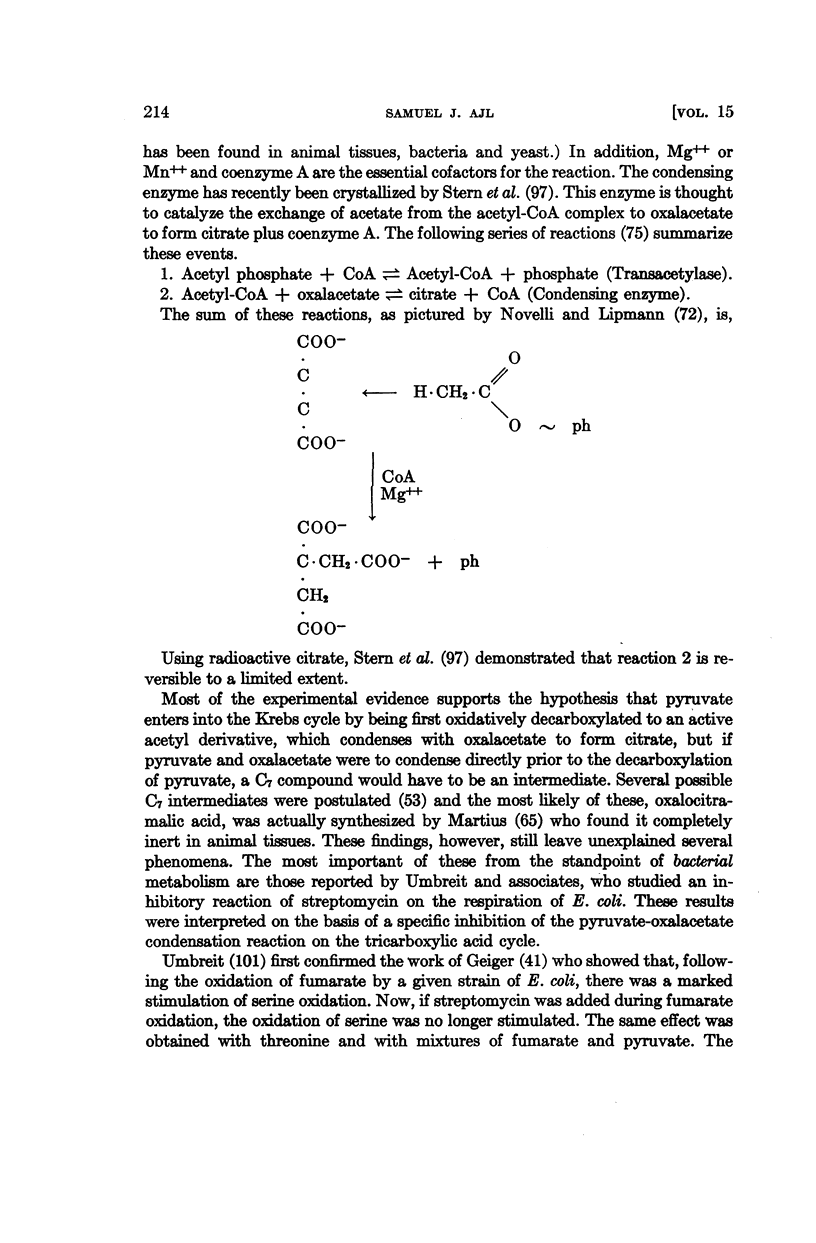
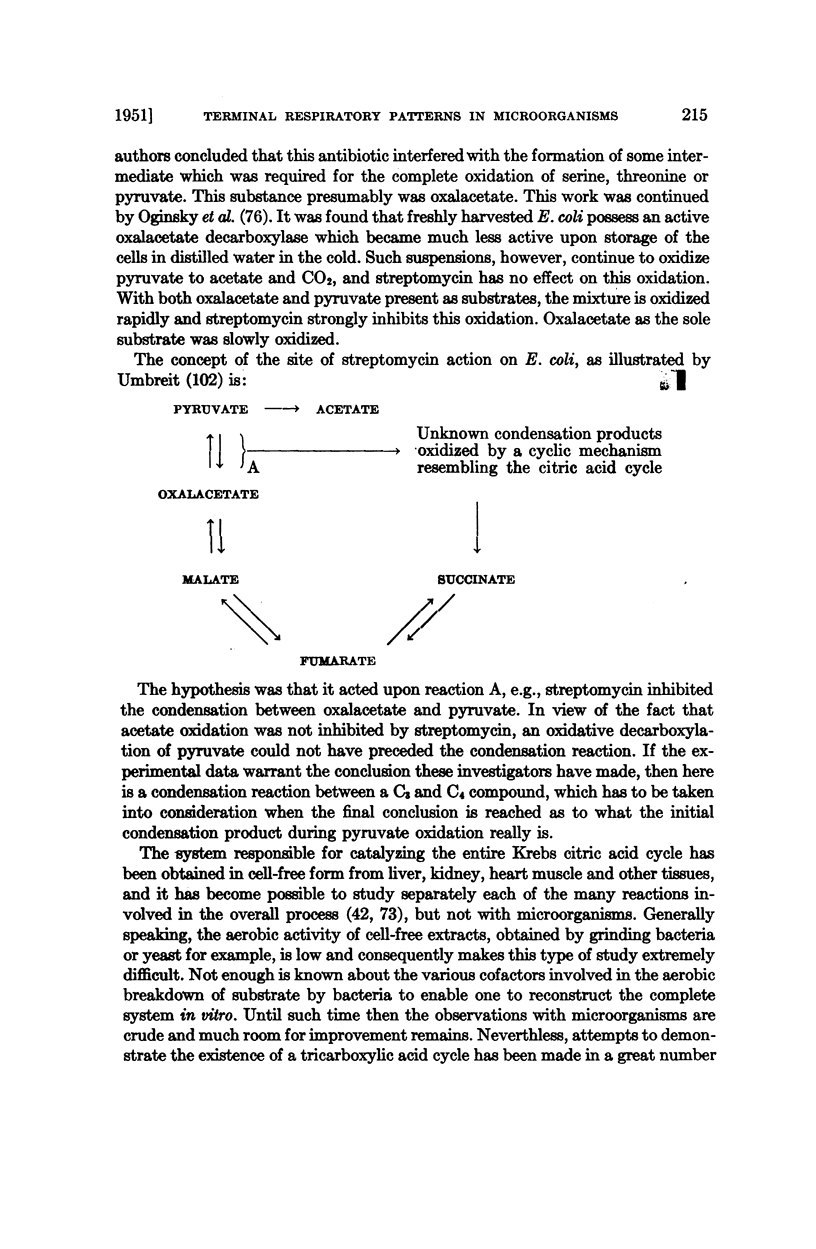
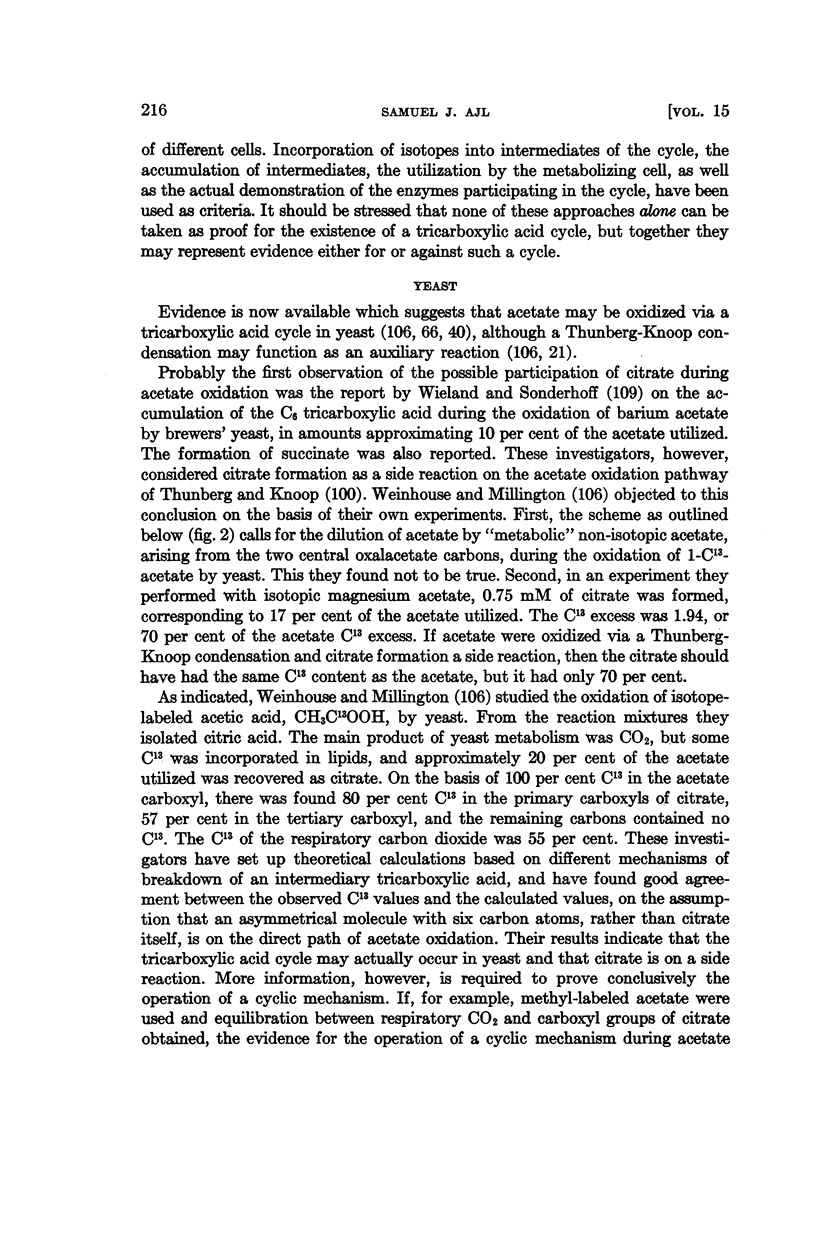
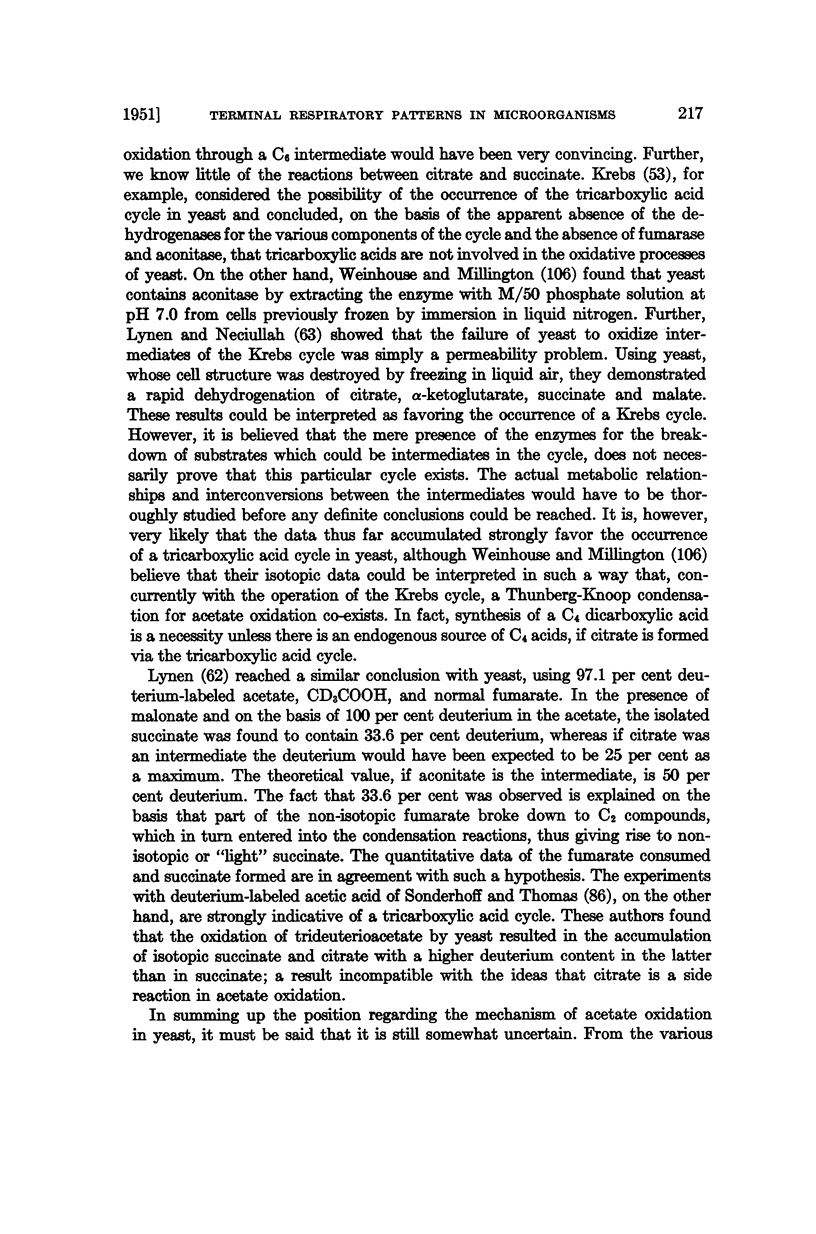
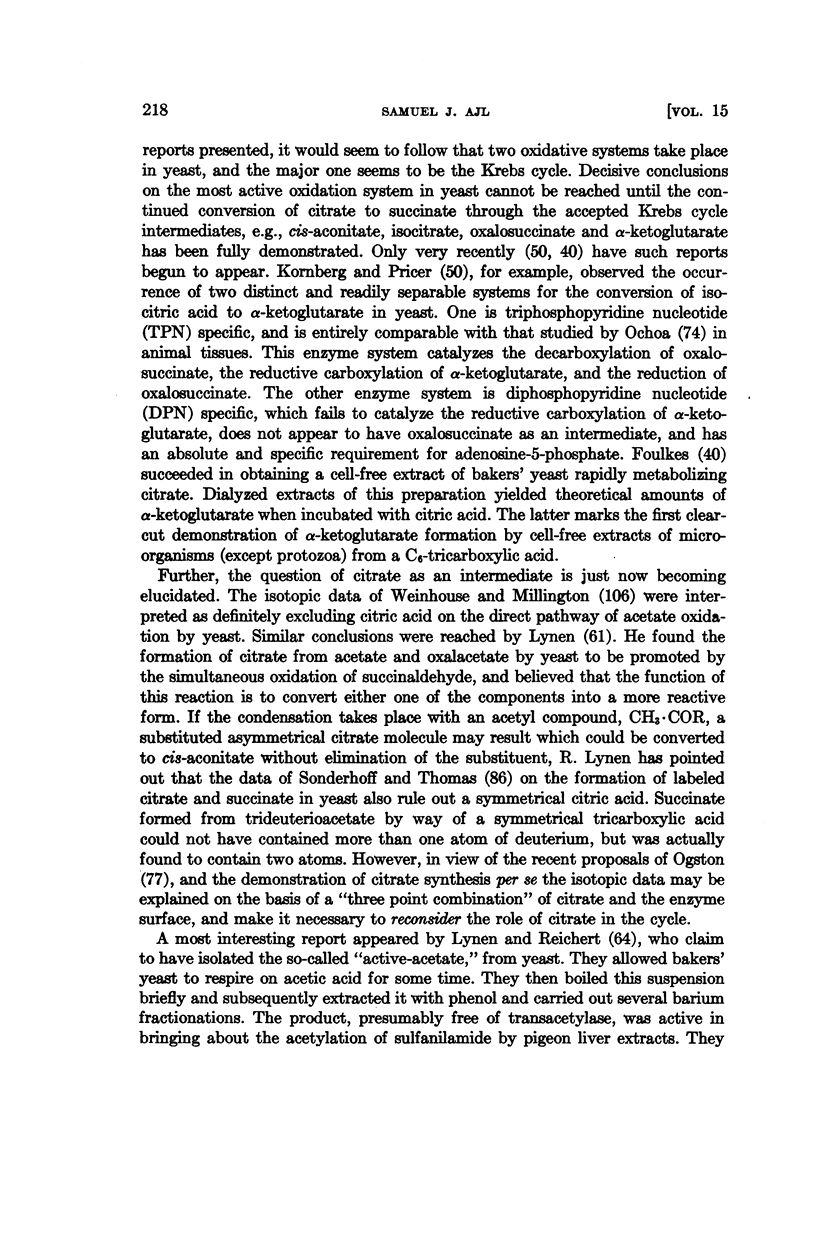
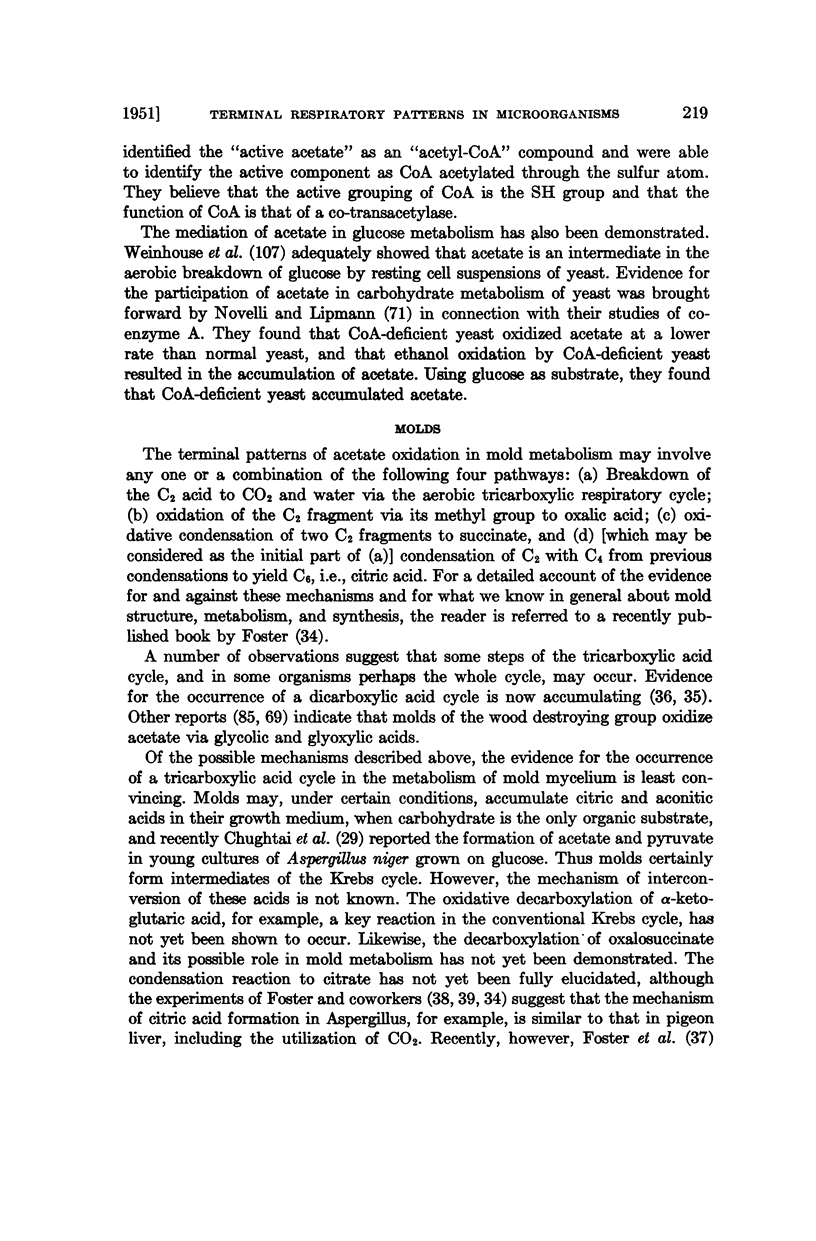
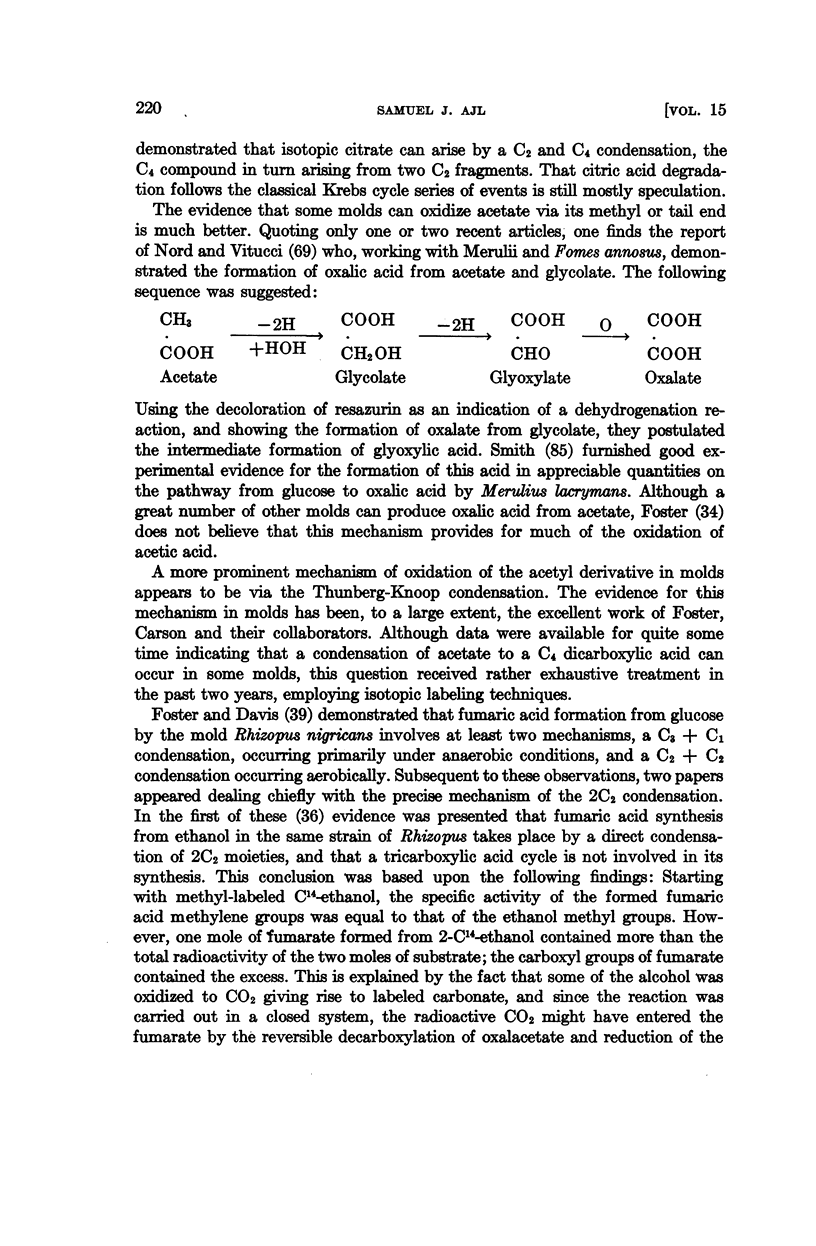
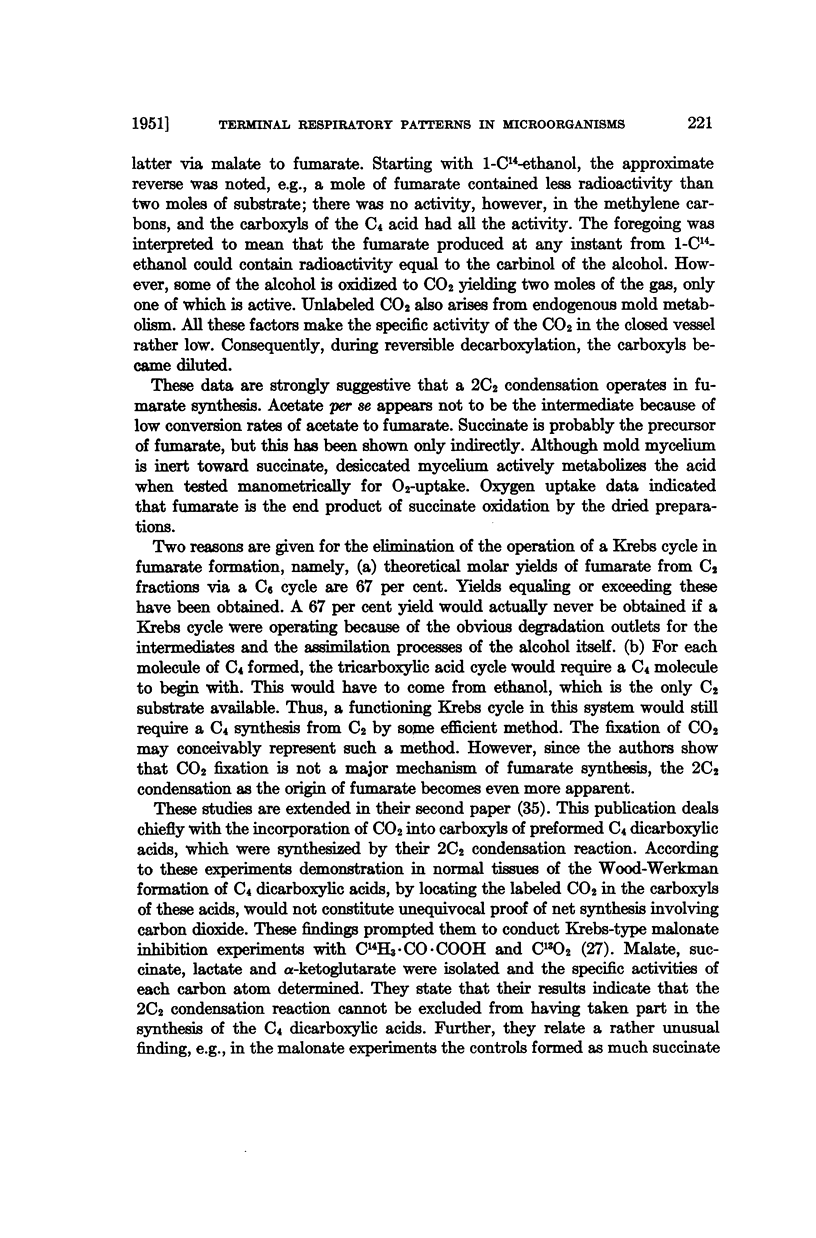
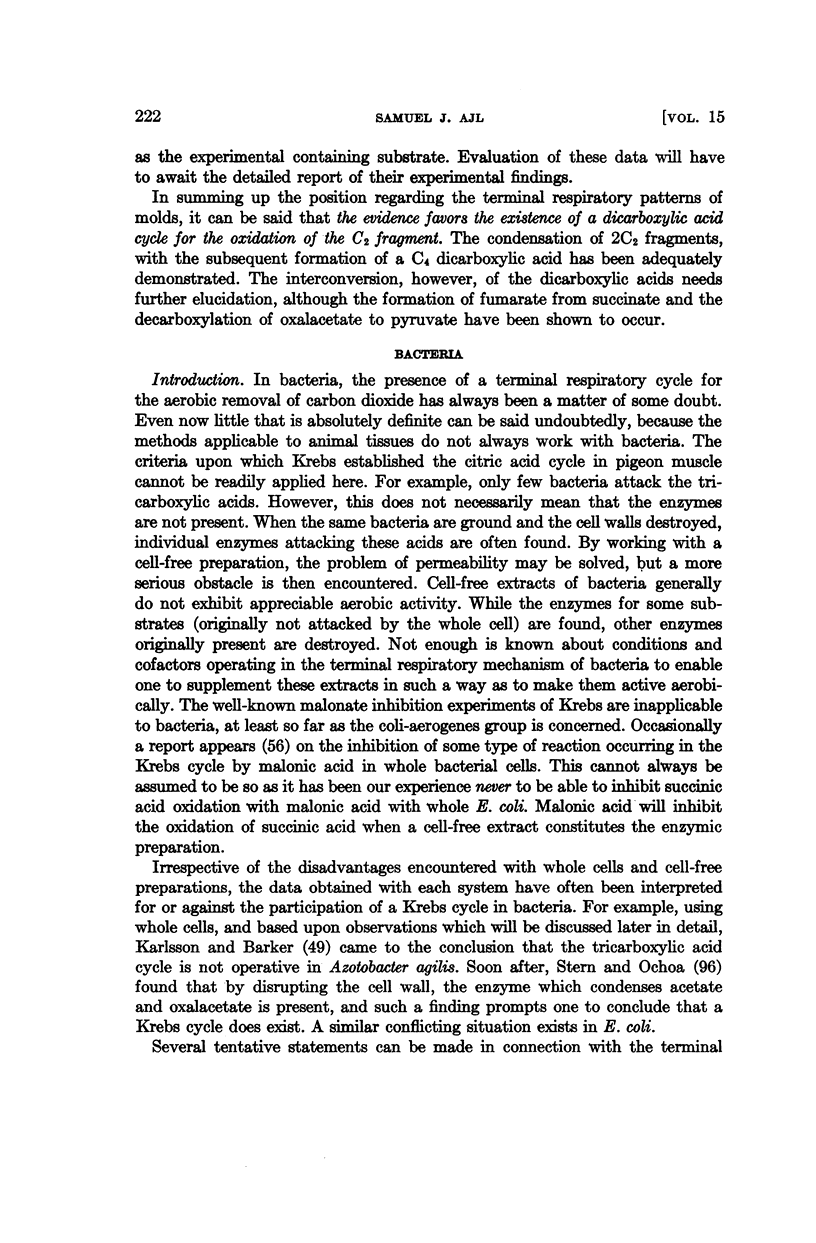
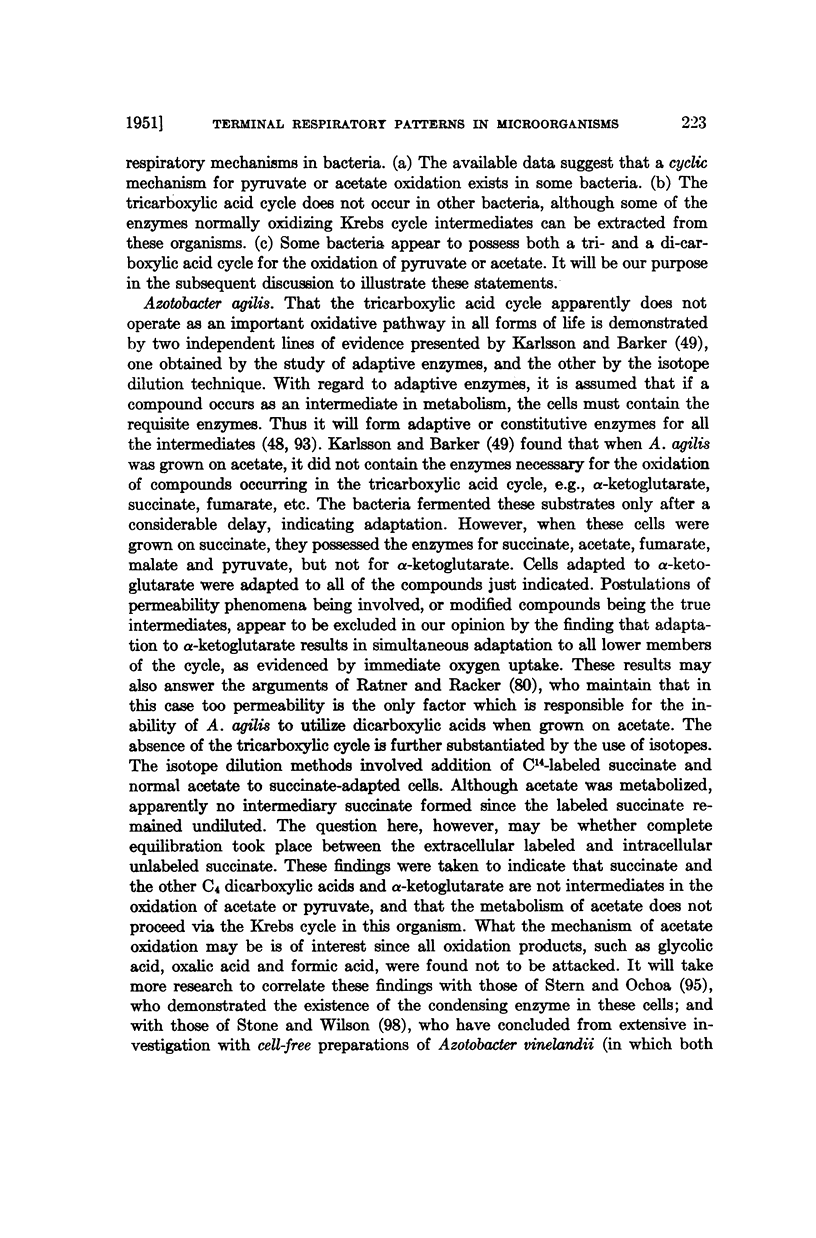
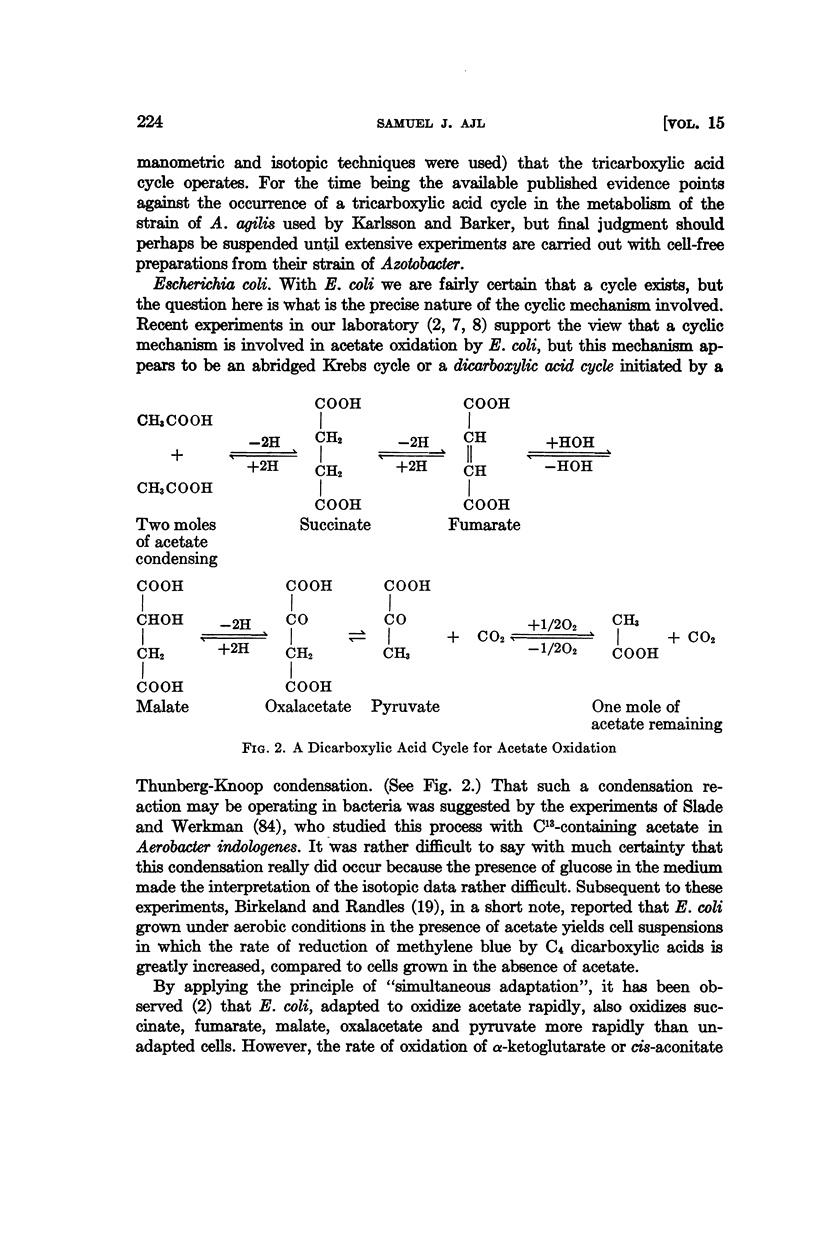
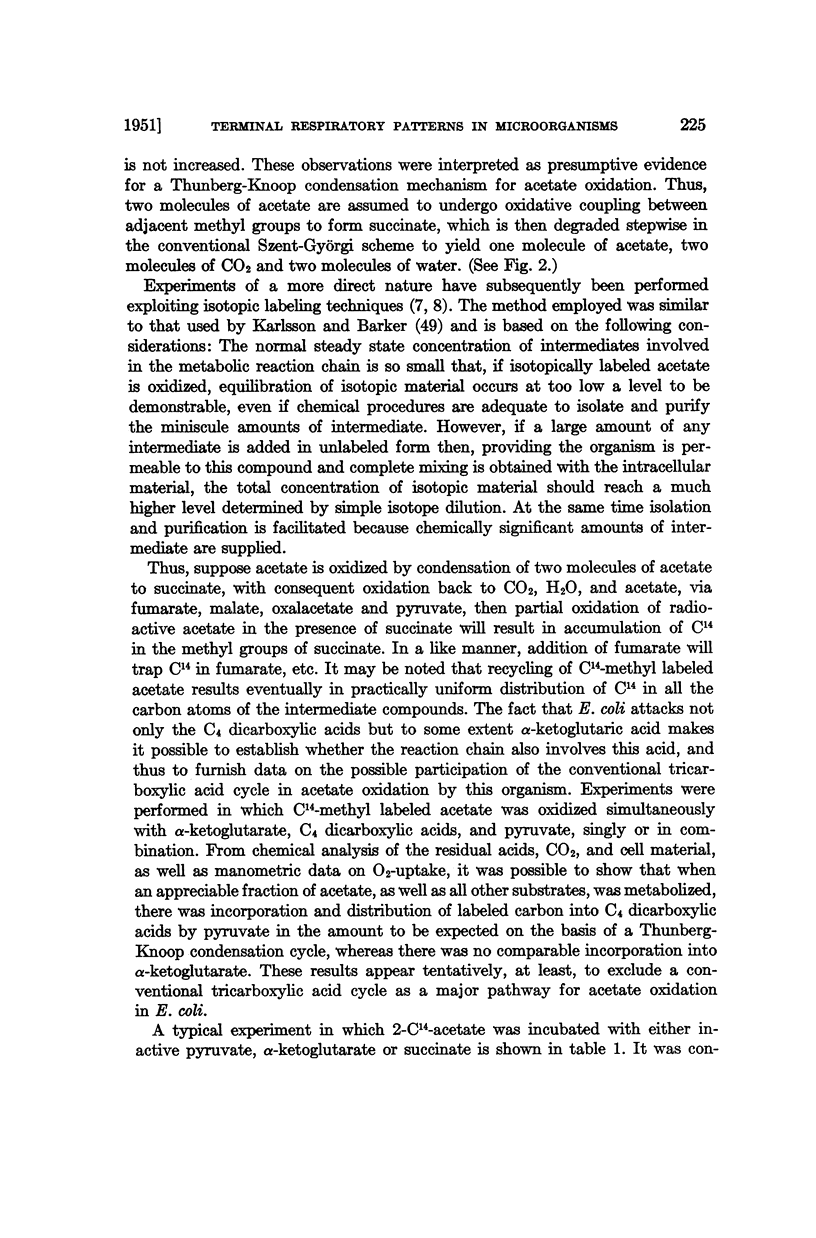
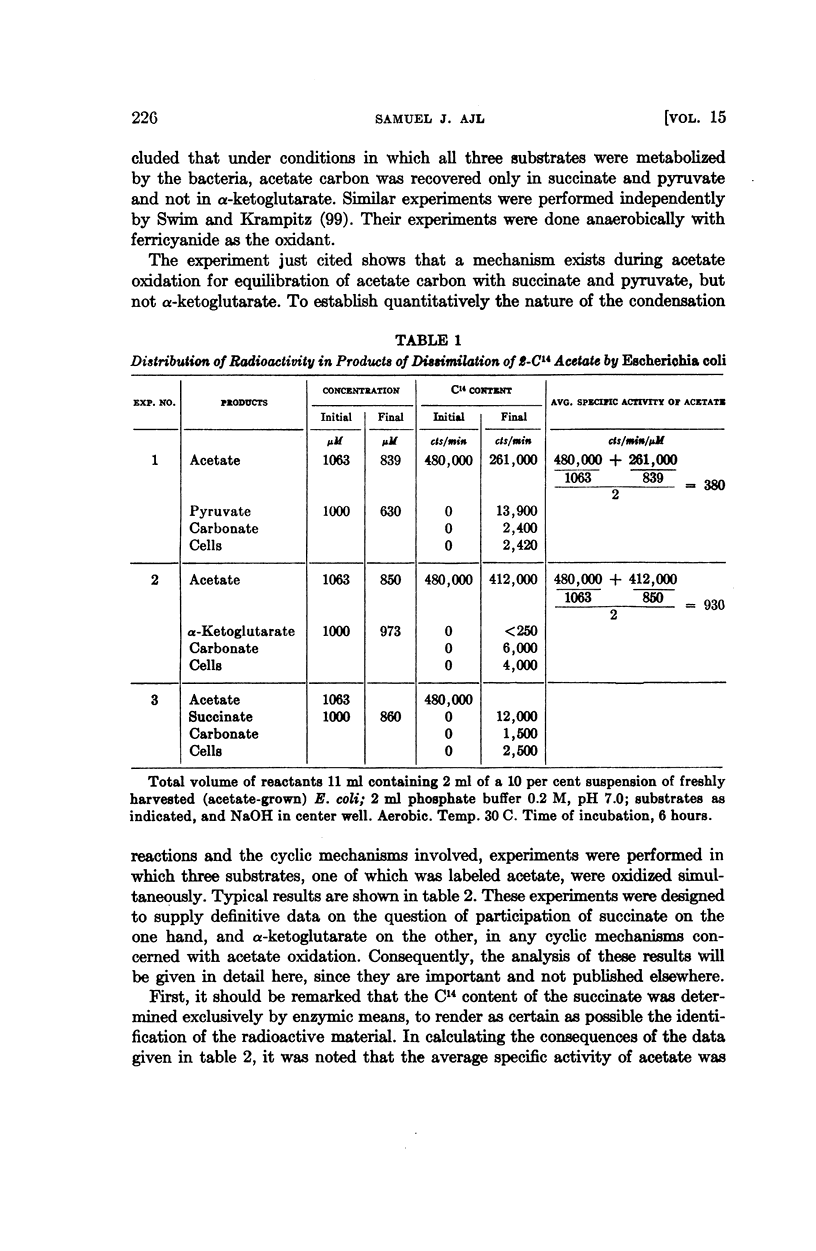
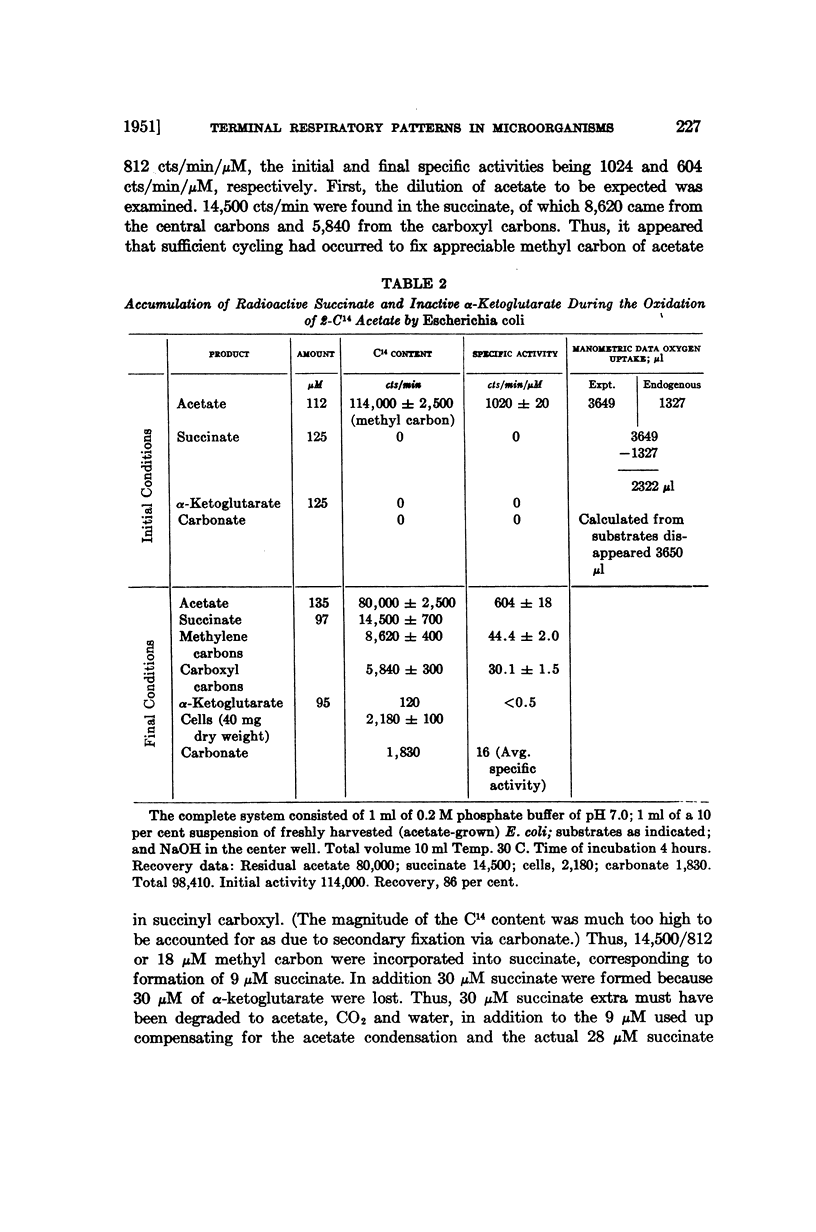
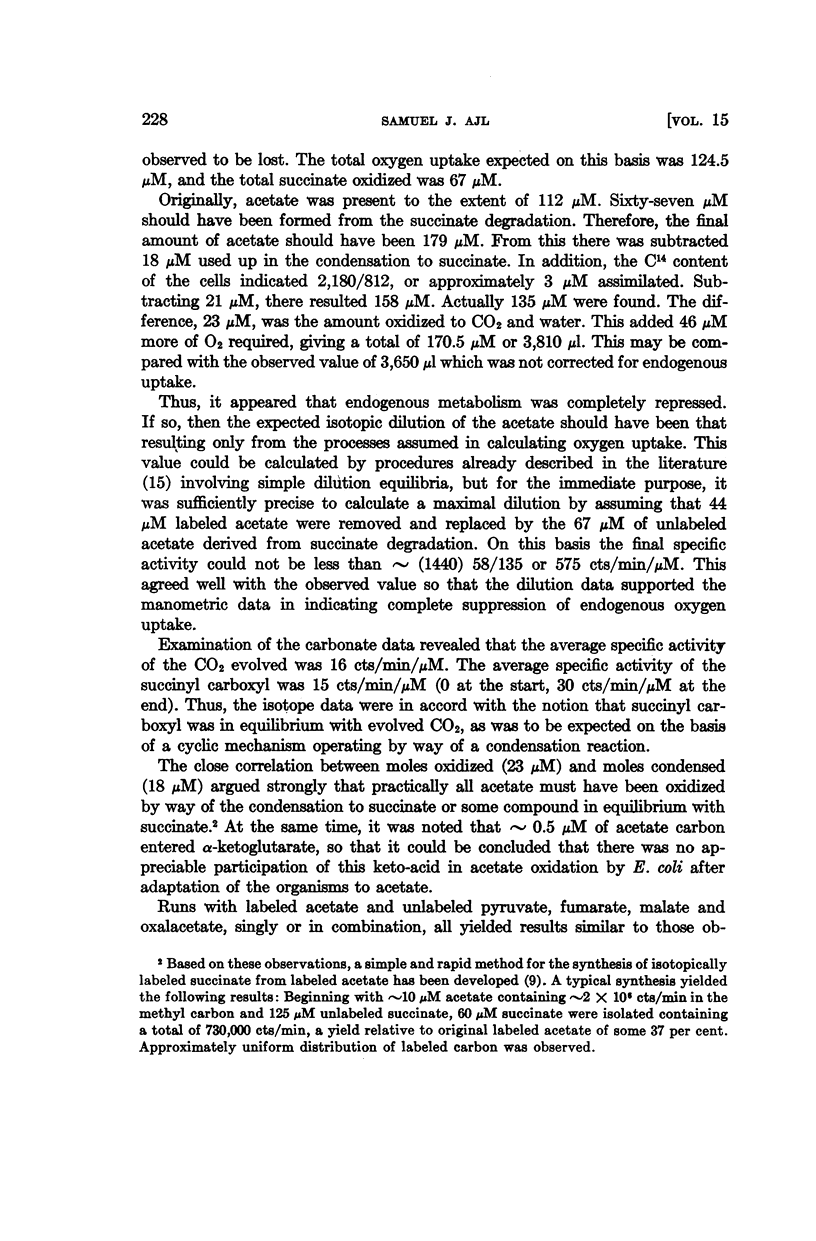
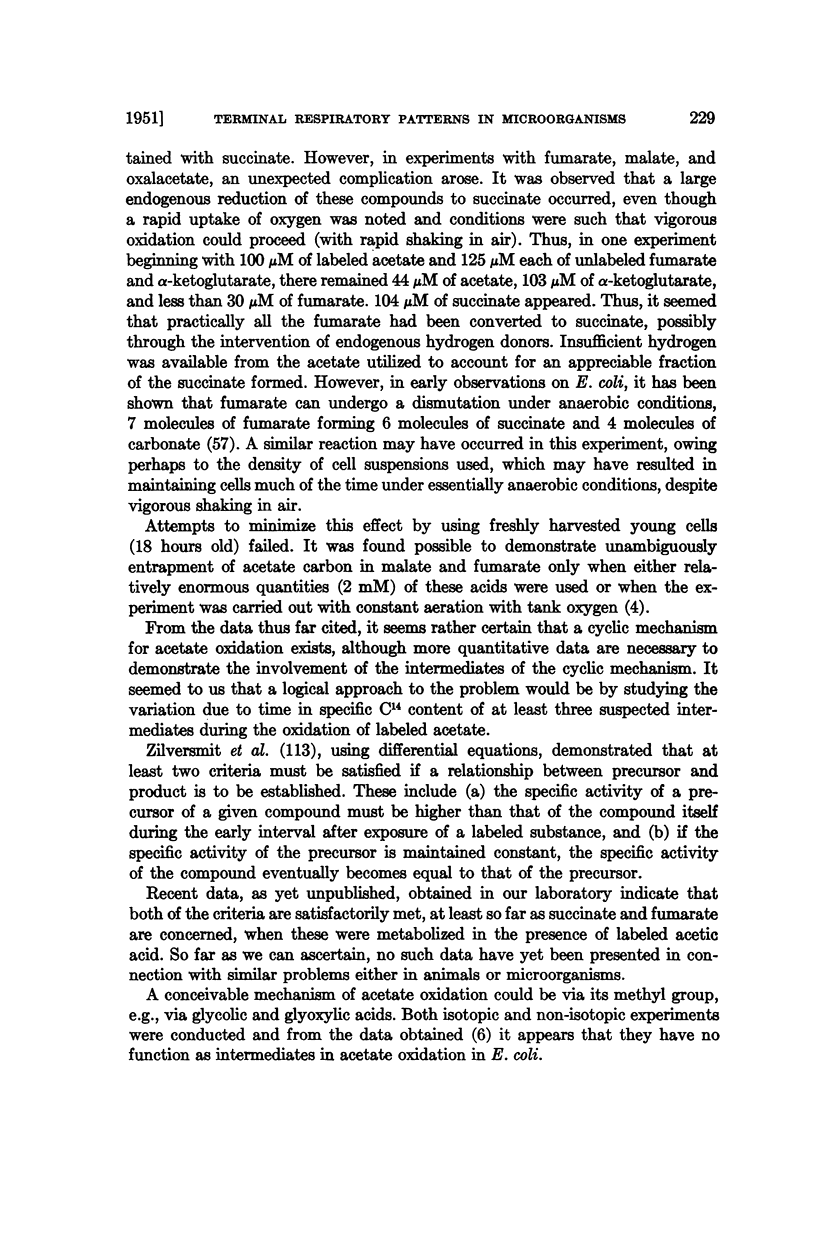
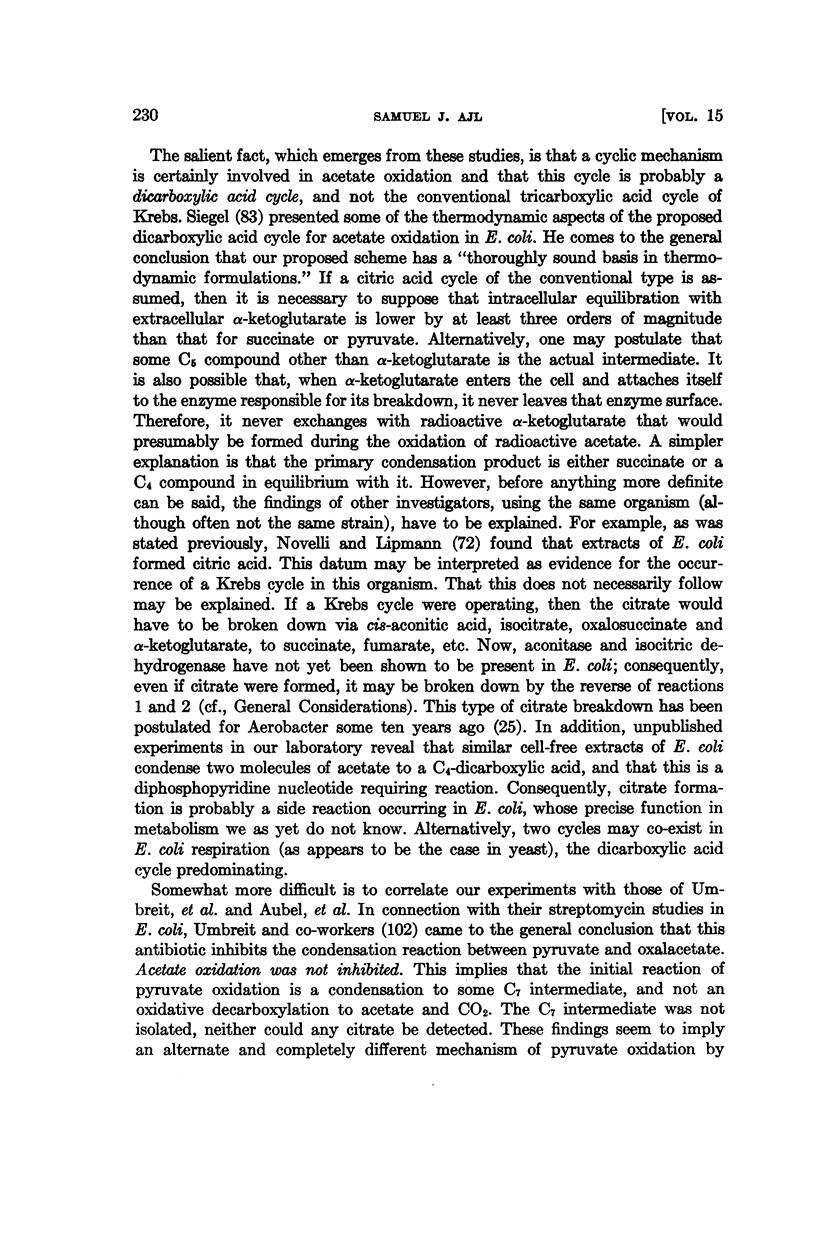
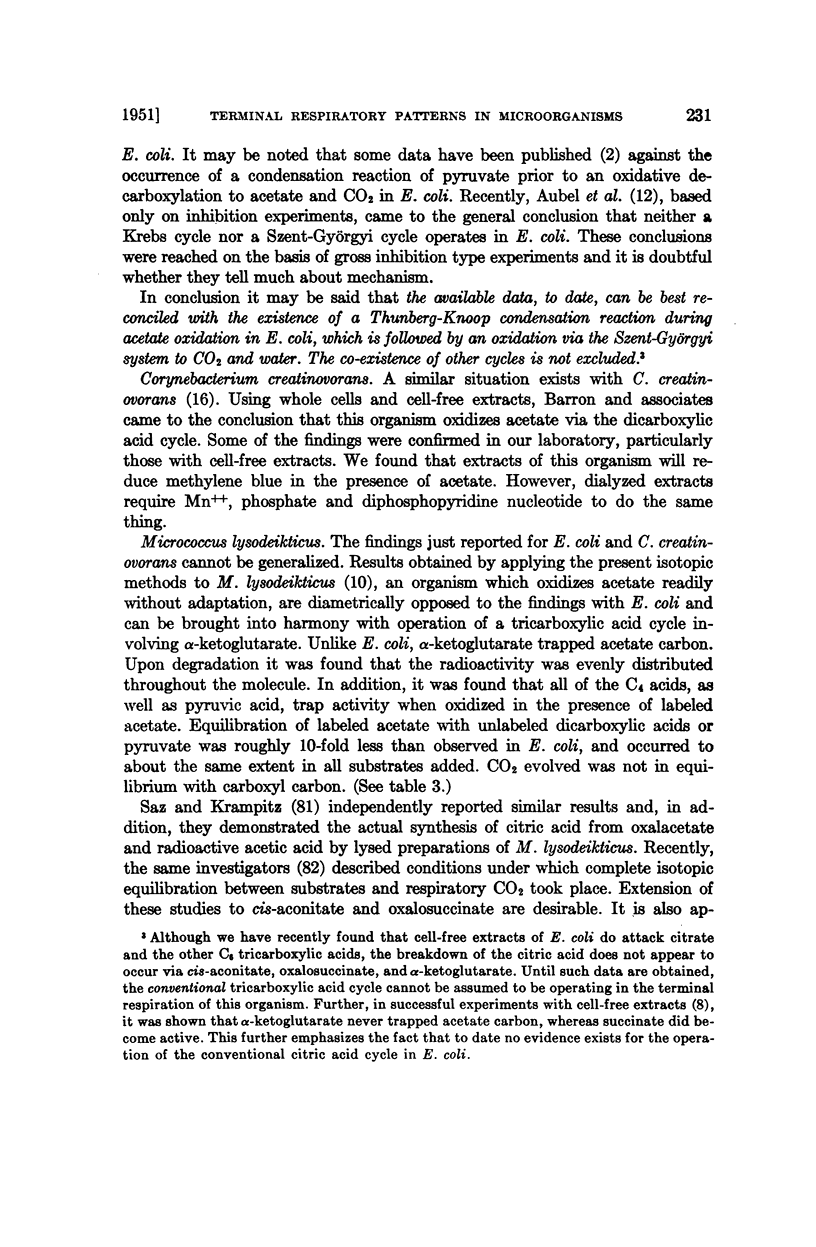
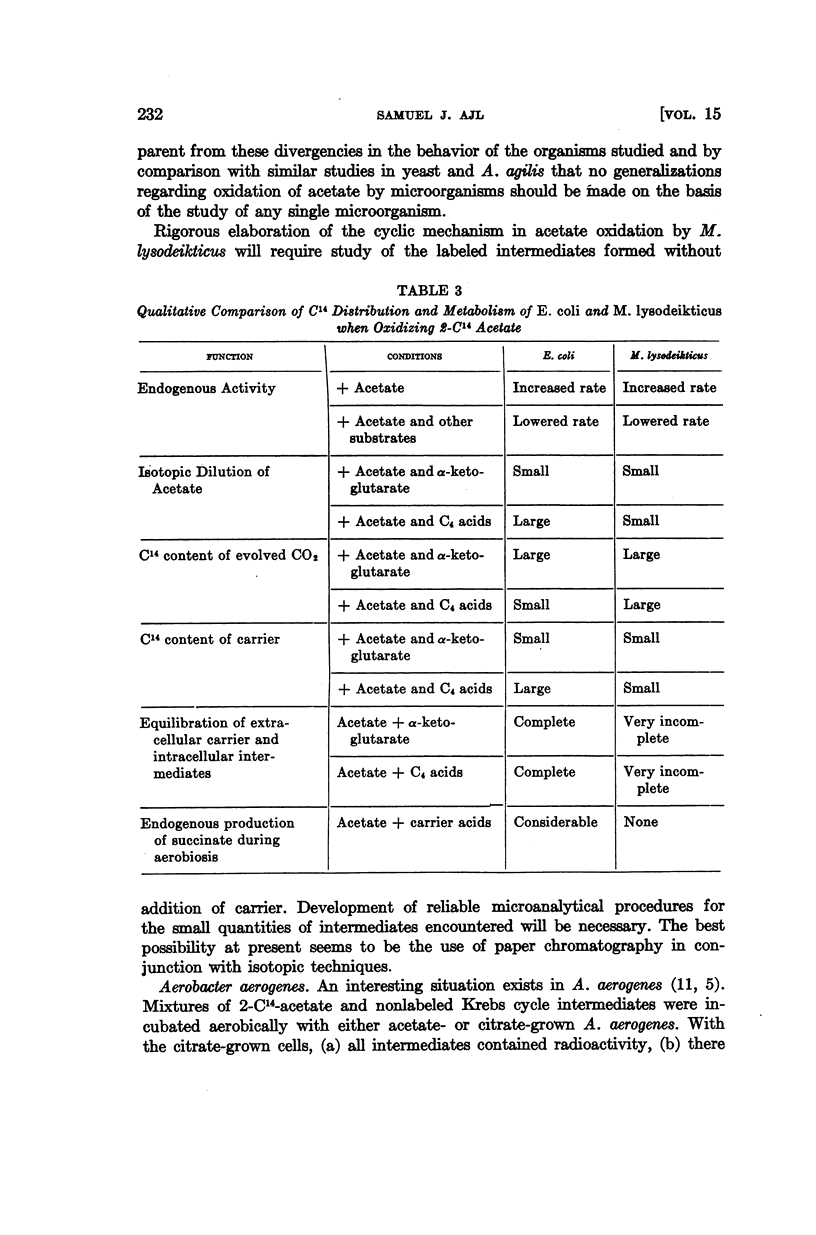
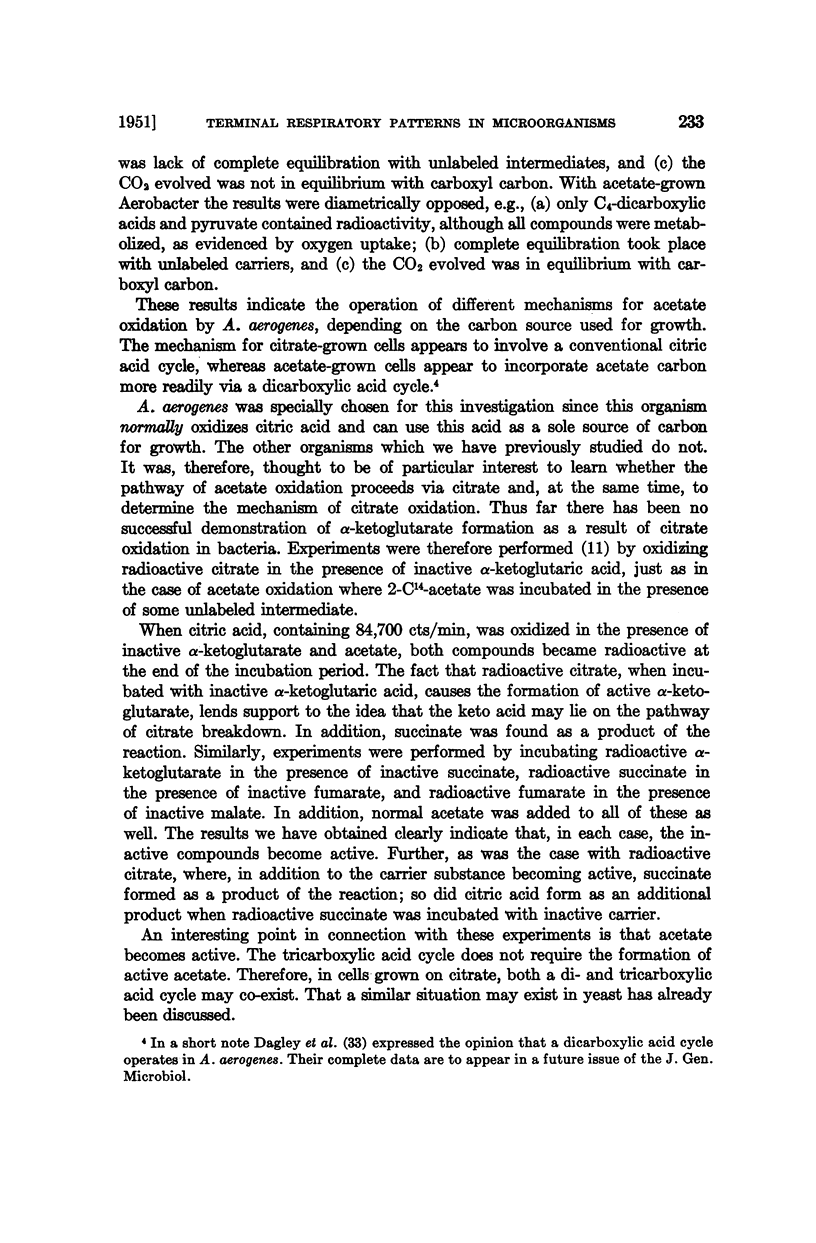
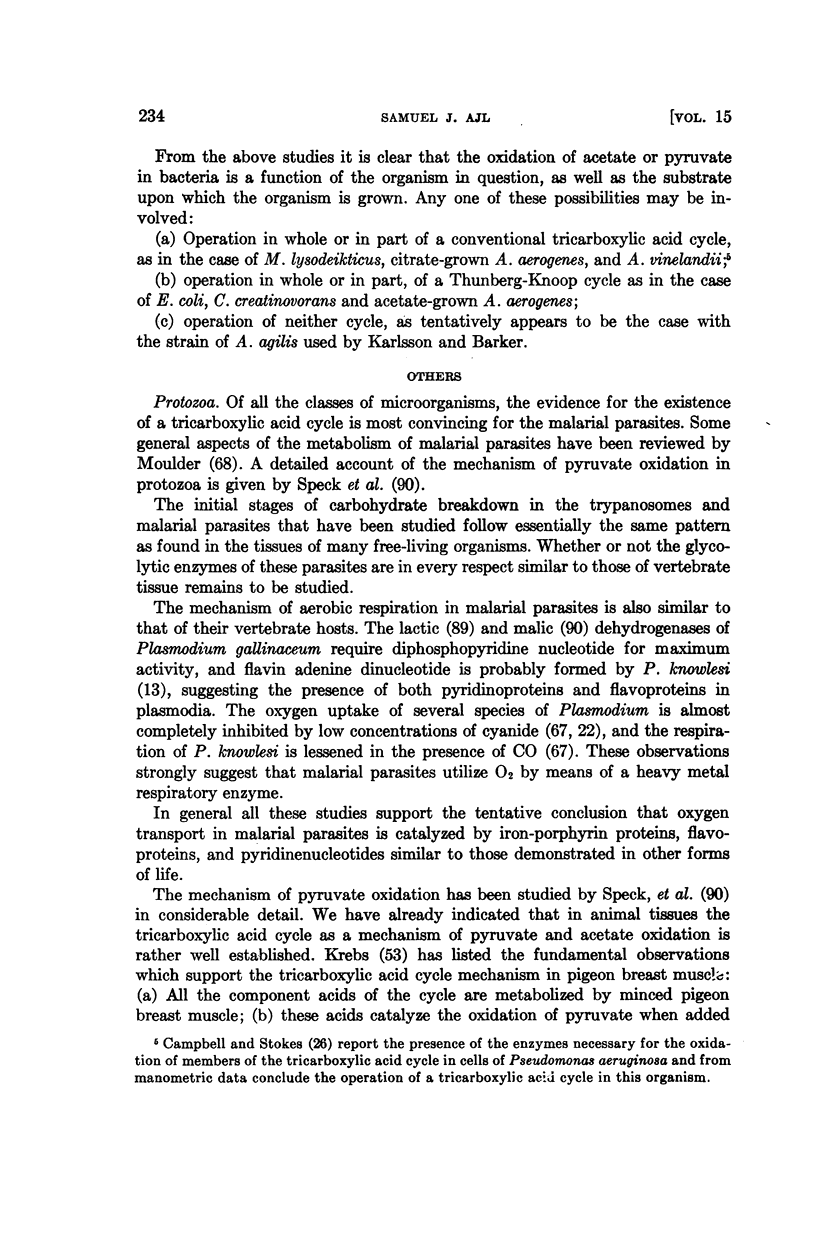
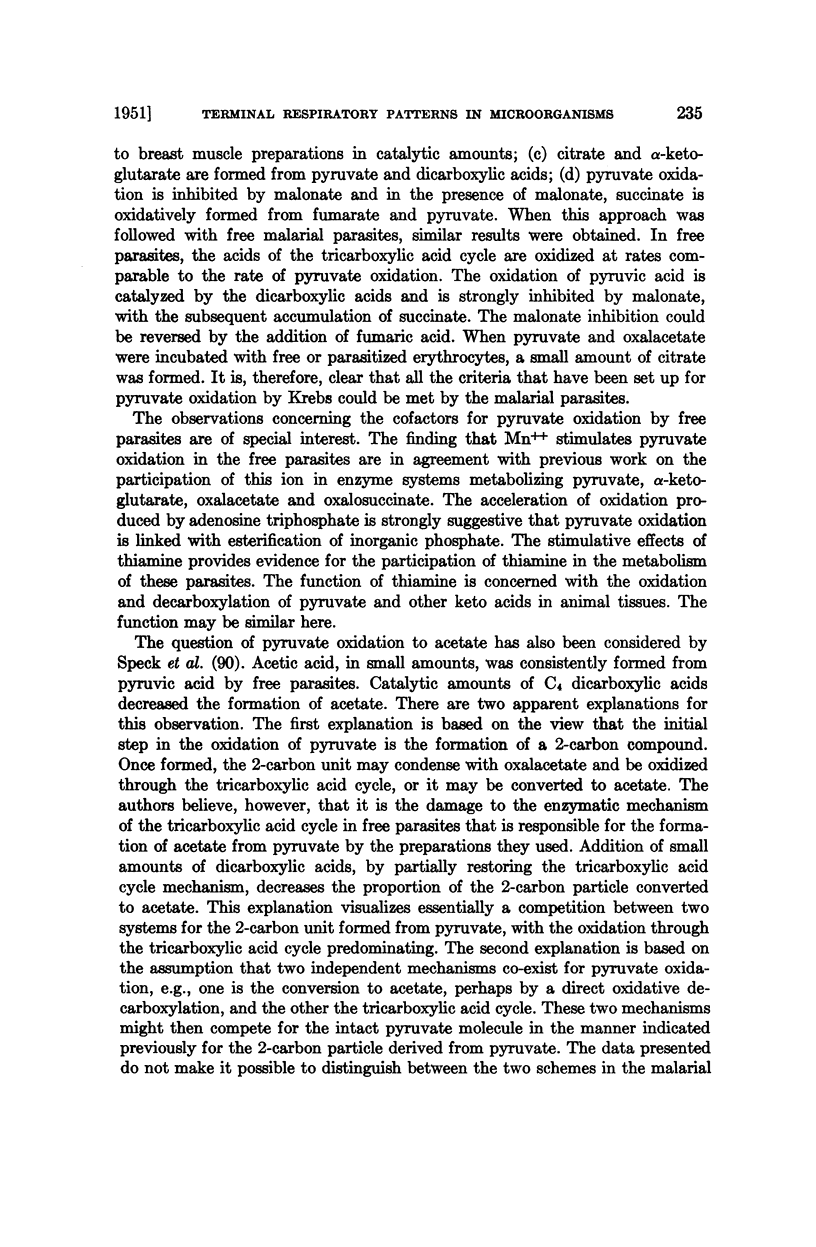
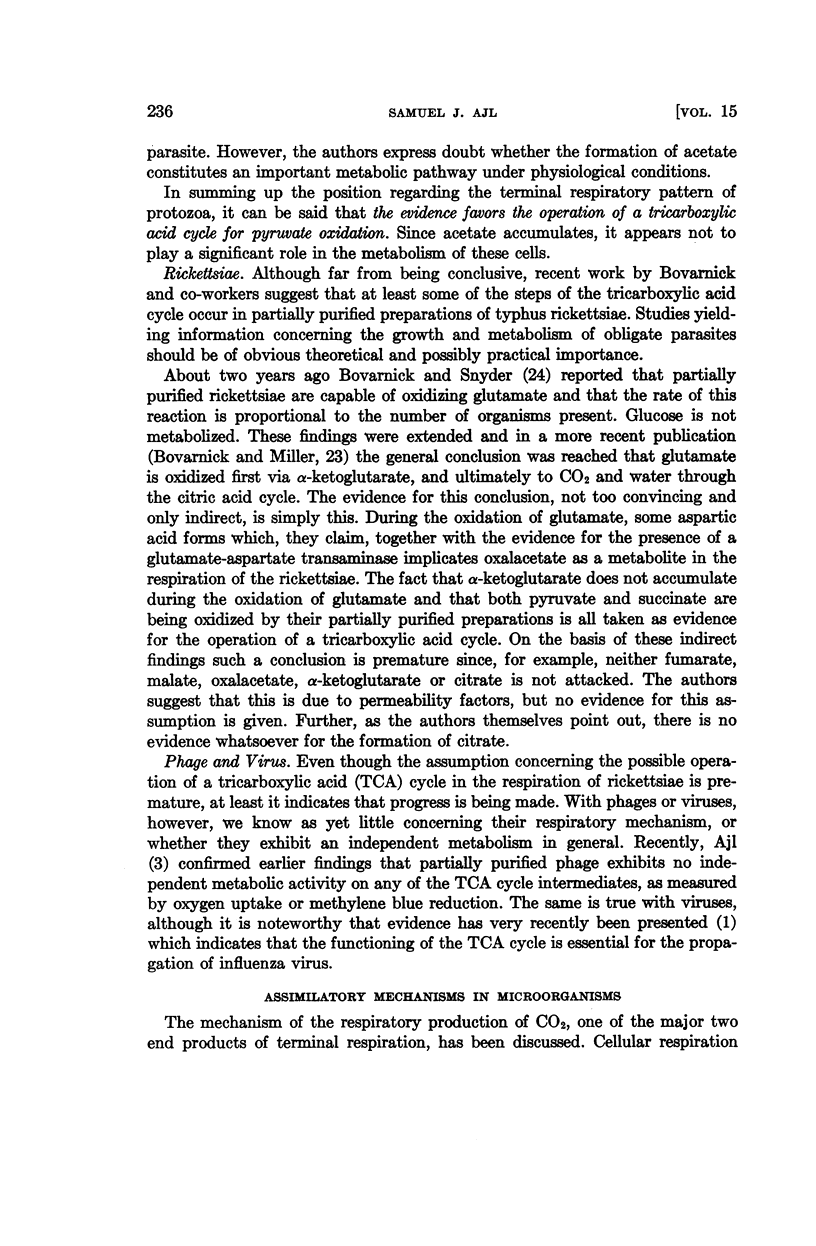
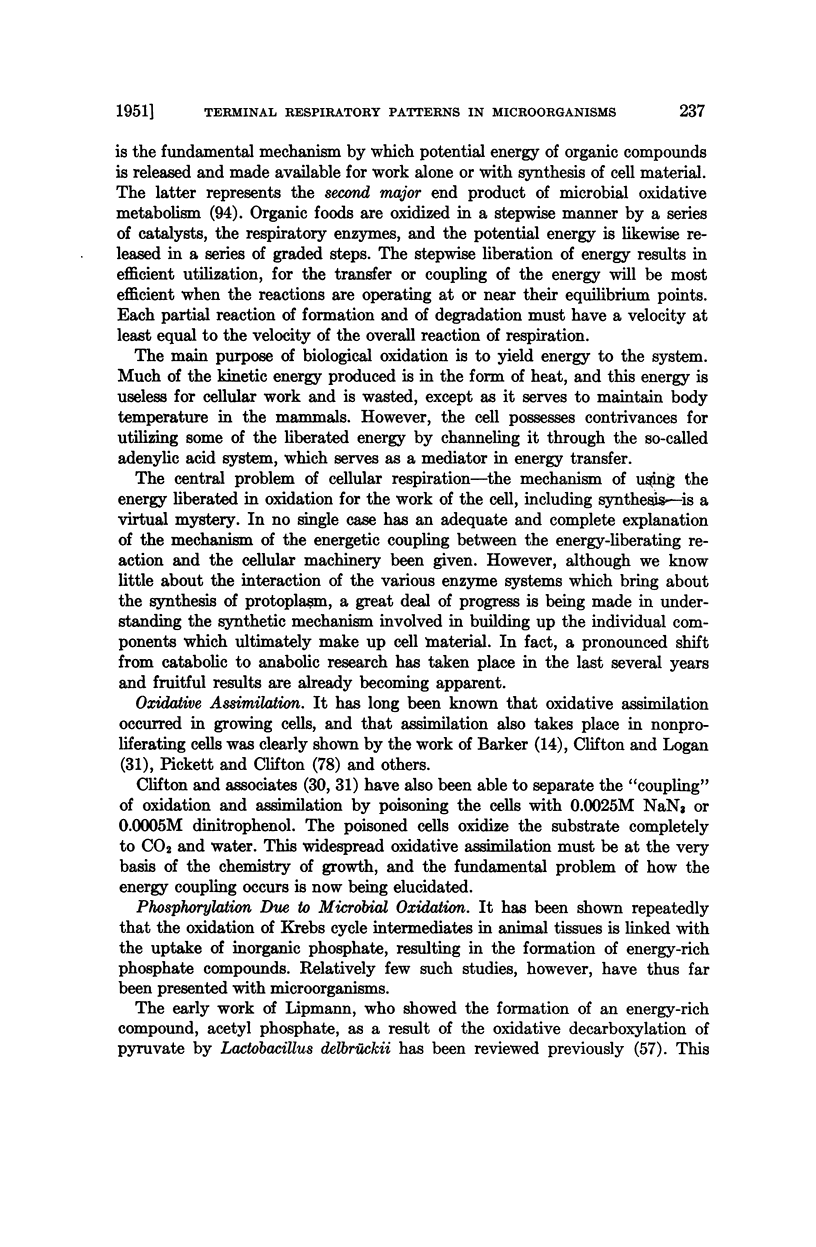
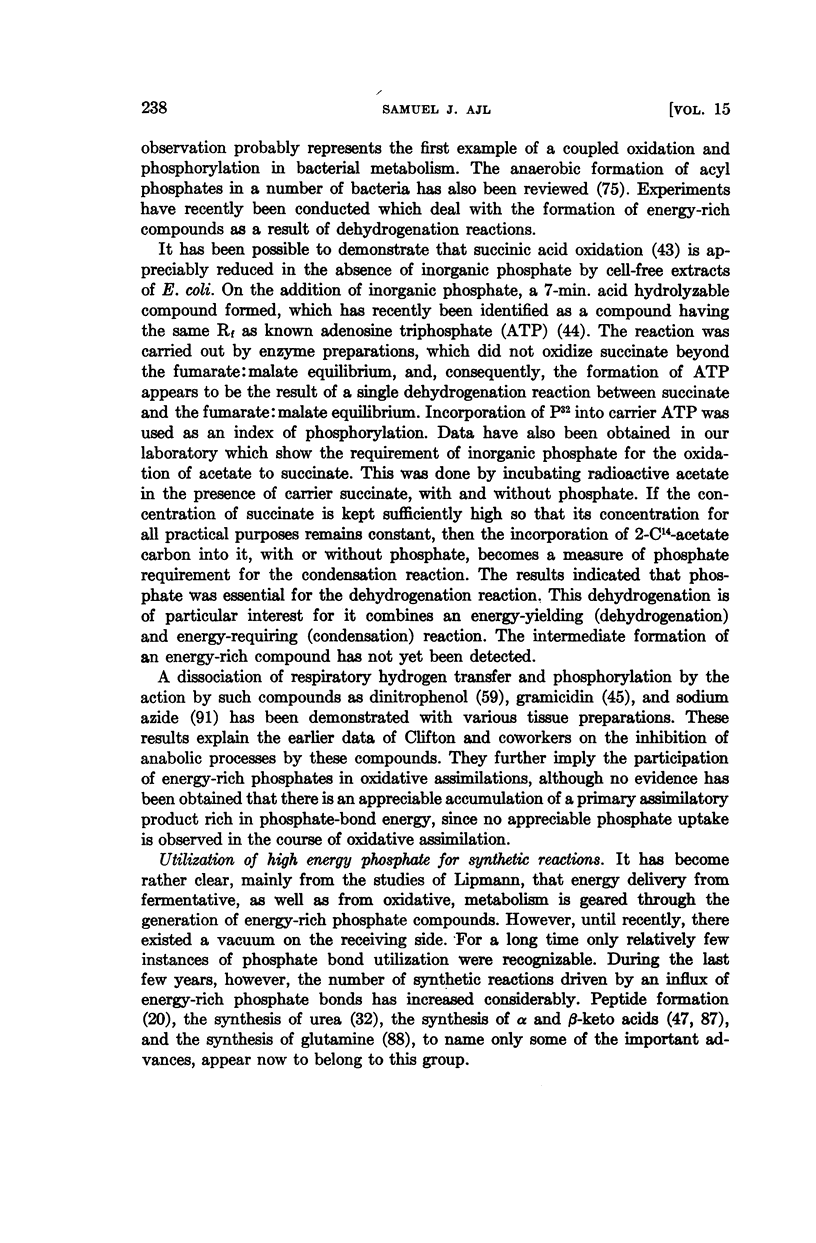
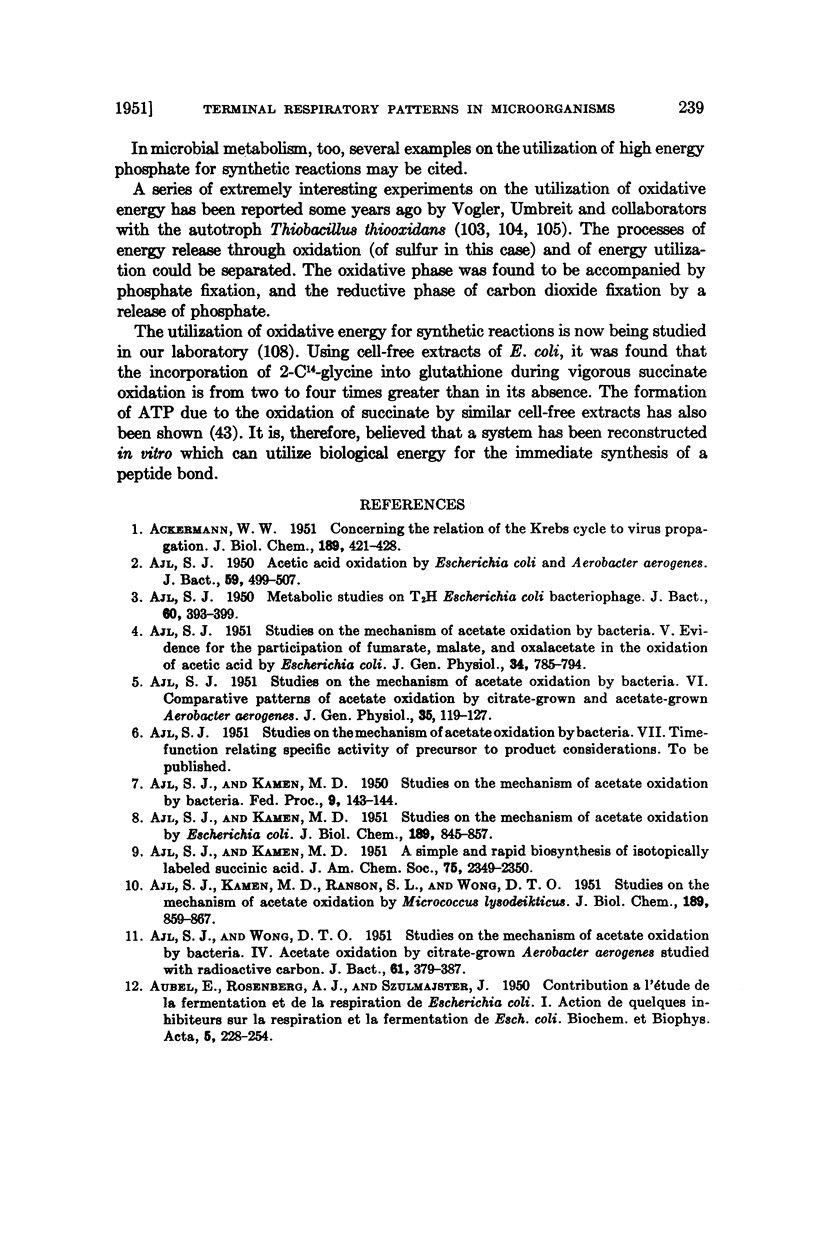
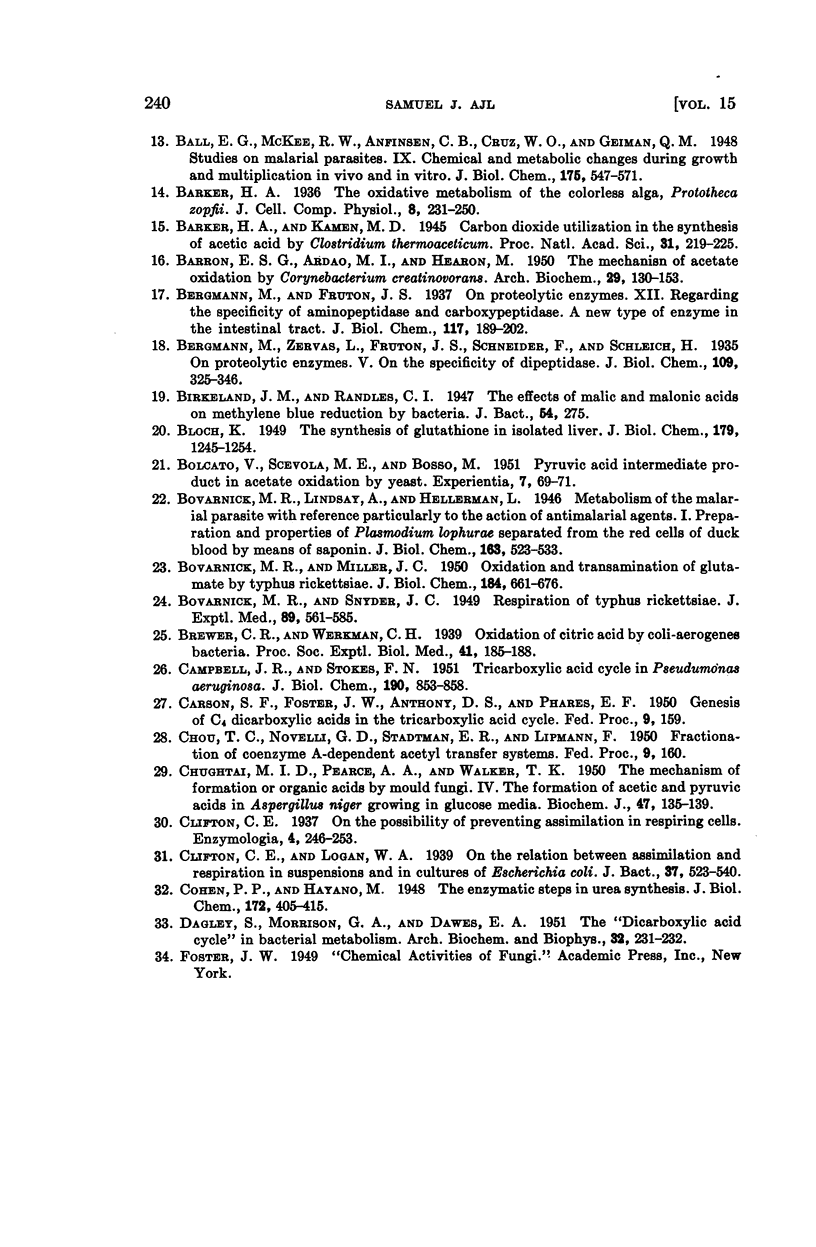
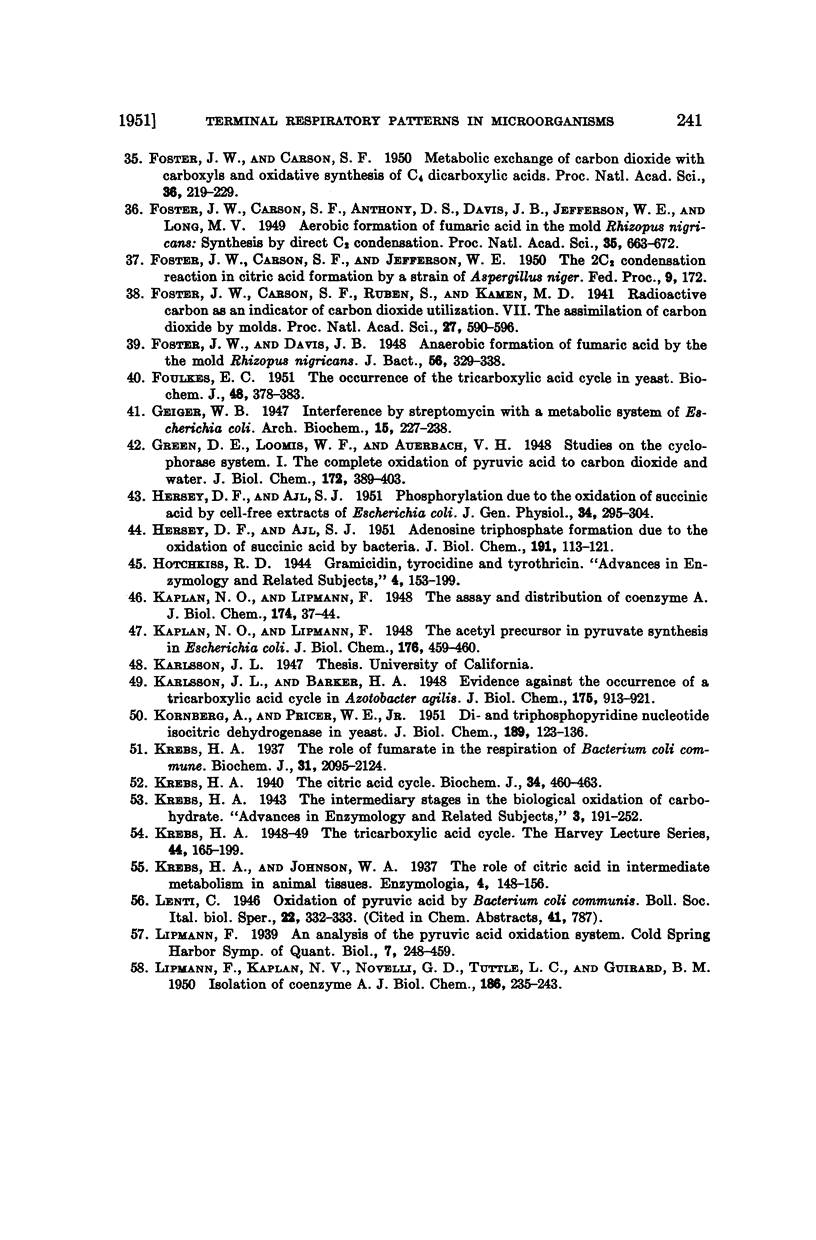
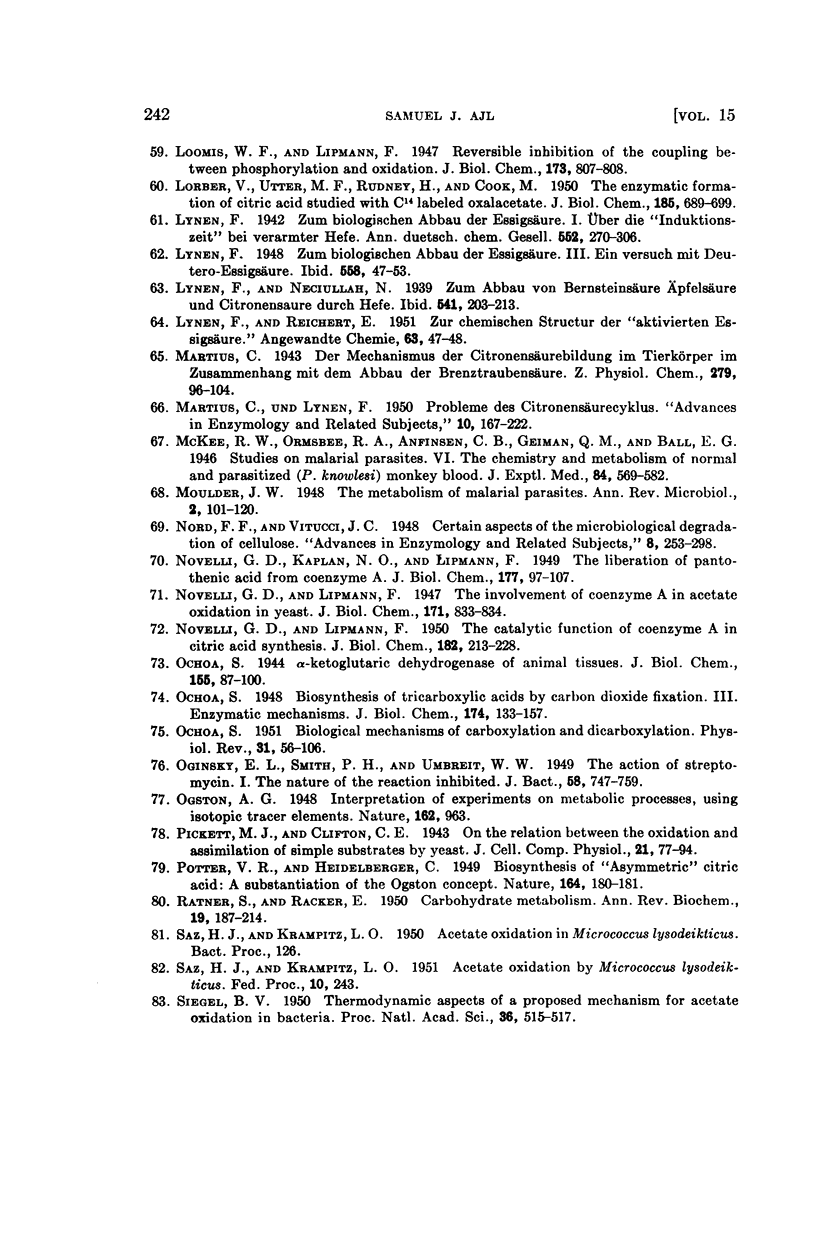
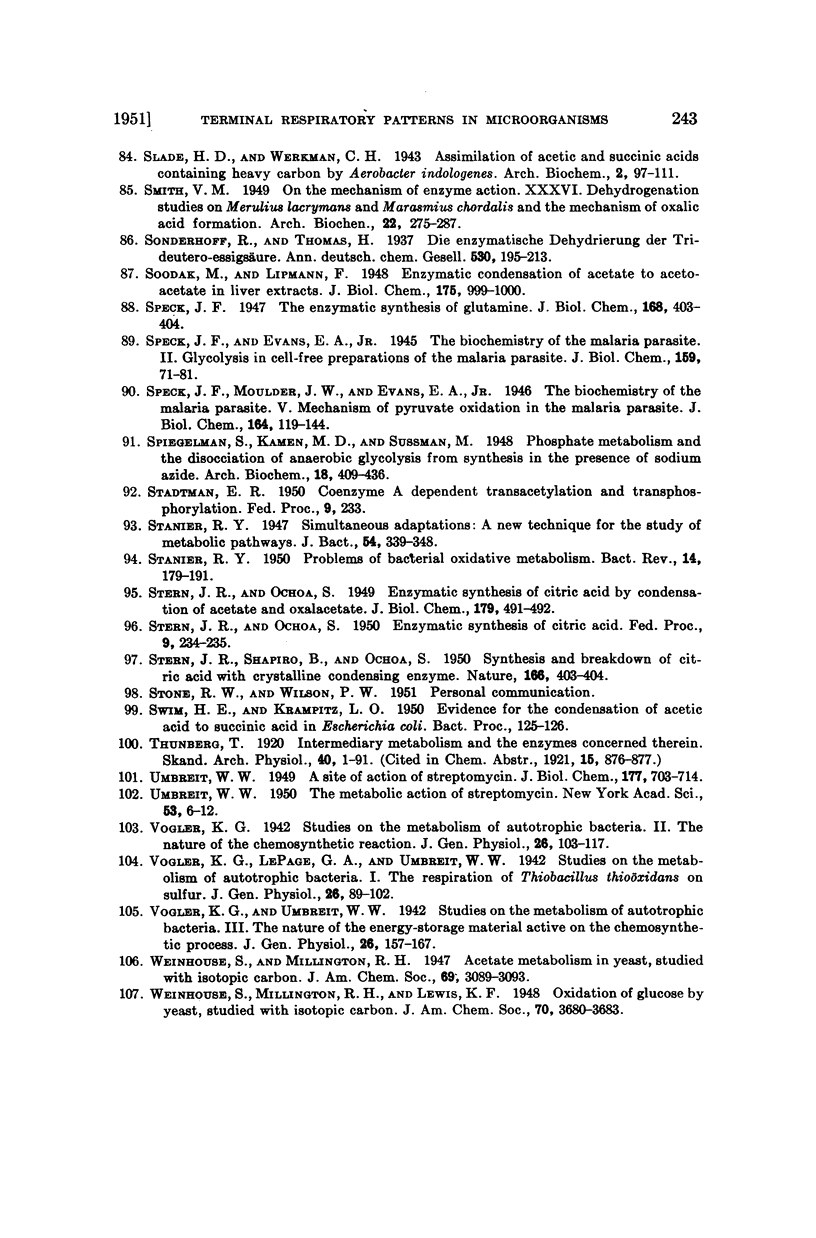
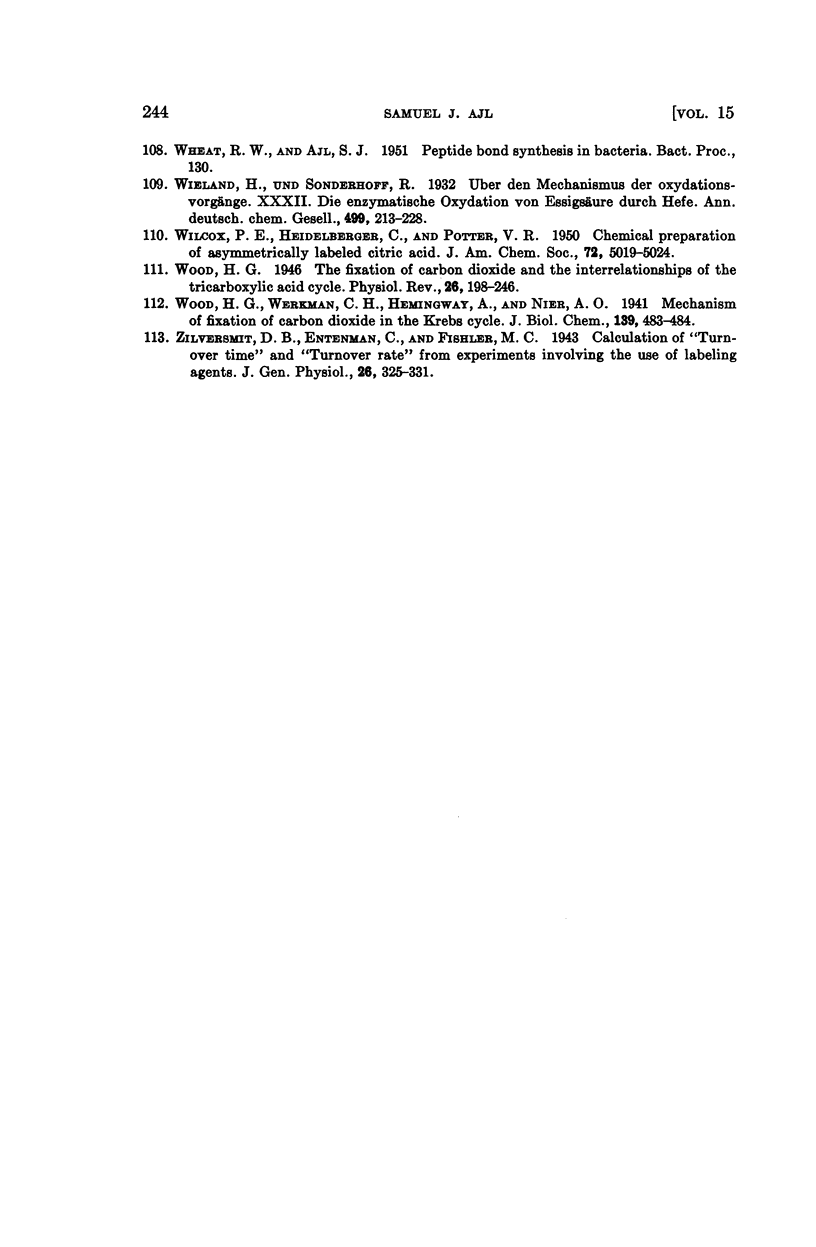
Selected References
These references are in PubMed. This may not be the complete list of references from this article.
- ACKERMANN W. W., KLERNSCHMIDT E. Concerning the relation of the Krebs cycle to virus propagation. J Biol Chem. 1951 Mar;189(1):421–428. [PubMed] [Google Scholar]
- AJL S. J. Acetic acid oxidation by Escherichia coli and Aerobacter aerogenes. J Bacteriol. 1950 Apr;59(4):499–507. doi: 10.1128/jb.59.4.499-507.1950. [DOI] [PMC free article] [PubMed] [Google Scholar]
- AJL S. J., KAMEN M. D., RANSON S. L., WONG D. T. O. Studies on the mechanism of acetate oxidation by micrococcus lysodeikticus. J Biol Chem. 1951 Apr;189(2):859–867. [PubMed] [Google Scholar]
- AJL S. J., KAMEN M. D. Studies on the mechanism of acetate oxidation by Escherichia coli. J Biol Chem. 1951 Apr;189(2):845–857. [PubMed] [Google Scholar]
- AJL S. J. Metabolic studies on T2 Escherichia coli bacteriophage. J Bacteriol. 1950 Oct;60(4):393–399. doi: 10.1128/jb.60.4.393-399.1950. [DOI] [PMC free article] [PubMed] [Google Scholar]
- AJL S. J. Studies on the mechanism of acetate oxidation by bacteria. V. evidence for the participation of fumarate, malate, and oxalacetate in the oxidation of acetic acid by Escherichia coli. J Gen Physiol. 1951 Jul;34(6):785–794. doi: 10.1085/jgp.34.6.785. [DOI] [PMC free article] [PubMed] [Google Scholar]
- AJL S. J. Studies on the mechanism of acetate oxidation by bacteria. VI. Comparative patterns of acetate oxidation by citrate-grown and acetate-grown Aerobacter aerogenes. J Gen Physiol. 1951 Sep;35(1):119–127. doi: 10.1085/jgp.35.1.119. [DOI] [PMC free article] [PubMed] [Google Scholar]
- AJL S. J., WONG D. T. O. Studies on the mechanism of acetate oxidation by bacteria. IV. Acetate oxidation by citrate-grown Aerobacter aerogenes studied with radioactive carbon. J Bacteriol. 1951 Apr;61(4):379–387. doi: 10.1128/jb.61.4.379-387.1951. [DOI] [PMC free article] [PubMed] [Google Scholar]
- AUBEL E., ROSENBERG A. J., SZULMAJSTER J. Contribution à l'étude de la fermentation et de la respiration de Escherichia coli. I. Action de quelques inhibiteurs sur la respiration et la fermentation de Esch. coli. Biochim Biophys Acta. 1950 Apr;5(2):228–254. doi: 10.1016/0006-3002(50)90168-5. [DOI] [PubMed] [Google Scholar]
- BARRON E. S. G., ARDAO M. I., HEARON M. The mechanism of acetate oxidation by Corynebacterium creatinovorans. Arch Biochem. 1950 Nov;29(1):130–153. [PubMed] [Google Scholar]
- BOLCATO V., SCEVOLA M. E., BOSSO M. Pyruvic acid intermediate product in acetate oxidation by yeast. Experientia. 1951 Feb 2;7(2):69–71. doi: 10.1007/BF02153834. [DOI] [PubMed] [Google Scholar]
- BOVARNICK M. R., MILLER J. C. Oxidation and transamination of glutamate by typhus rickettsiae. J Biol Chem. 1950 Jun;184(2):661–676. [PubMed] [Google Scholar]
- Barker H. A., Kamen M. D. Carbon Dioxide Utilization in the Synthesis of Acetic Acid by Clostridium Thermoaceticum. Proc Natl Acad Sci U S A. 1945 Aug;31(8):219–225. doi: 10.1073/pnas.31.8.219. [DOI] [PMC free article] [PubMed] [Google Scholar]
- CAMPBELL J. J. R., STOKES F. N. Tricarboxylic acid cycle in Pseudomonas aeruginosa. J Biol Chem. 1951 Jun;190(2):853–858. [PubMed] [Google Scholar]
- CHUGHTAI M. I. D., PEARCE A. A., WALKER T. K. The mechanism of the formation of organic acids by mould fungi; the formation of acetic and pyruvic acids in Aspergillus niger growing in glucose media. Biochem J. 1950 Aug;47(2):135–137. doi: 10.1042/bj0470135. [DOI] [PMC free article] [PubMed] [Google Scholar]
- Clifton C. E., Logan W. A. On the Relation between Assimilation and Respiration in Suspensions and in Cultures of Escherichia coli. J Bacteriol. 1939 May;37(5):523–540. doi: 10.1128/jb.37.5.523-540.1939. [DOI] [PMC free article] [PubMed] [Google Scholar]
- DAGLEY S., MORRISON G. A., DAWES E. A. The "dicarboxylic acid cycle" in bacterial metabolism. Arch Biochem Biophys. 1951 Jun;32(1):231–232. doi: 10.1016/0003-9861(51)90266-4. [DOI] [PubMed] [Google Scholar]
- FOSTER J. W., CARSON S. F. Aerobic formation of fumaric acid in the mold Rhizopus nigricans, synthesis by direct C2 condensation. Proc Natl Acad Sci U S A. 1949 Dec;35(12):663–672. doi: 10.1073/pnas.35.12.663. [DOI] [PMC free article] [PubMed] [Google Scholar]
- FOULKES E. C. The occurrence of the tricarboxylic acid cycle in yeast. Biochem J. 1951 Mar;48(3):378–383. doi: 10.1042/bj0480378. [DOI] [PMC free article] [PubMed] [Google Scholar]
- Foster J. W., Carson S. F. Metabolic Exchange of Carbon Dioxide with Carboxyls and Oxidative Synthesis of C(4) Dicarboxylic Acids. Proc Natl Acad Sci U S A. 1950 Apr;36(4):219–229. doi: 10.1073/pnas.36.4.219. [DOI] [PMC free article] [PubMed] [Google Scholar]
- Foster J. W., Carson S. F., Ruben S., Kamen M. D. Radioactive Carbon as an Indicator of Carbon Dioxide Utilization: VII. The Assimilation of Carbon Dioxide by Molds. Proc Natl Acad Sci U S A. 1941 Dec 15;27(12):590–596. doi: 10.1073/pnas.27.12.590. [DOI] [PMC free article] [PubMed] [Google Scholar]
- Foster J. W., Davis J. B. Anaerobic Formation of Fumaric Acid by the Mold Rhizopus nigricans. J Bacteriol. 1948 Sep;56(3):329–338. doi: 10.1128/jb.56.3.329-338.1948. [DOI] [PMC free article] [PubMed] [Google Scholar]
- HERSEY D. F., AJL S. J. Adenosinetriphosphate formation in the oxidation of succinic acid by bacteria. J Biol Chem. 1951 Jul;191(1):113–121. [PubMed] [Google Scholar]
- HERSEY D. F., AJL S. J. Phosphorylation due to the oxidation of succinic acid by cell-free extracts of Escherichia coli. J Gen Physiol. 1951 Jan;34(3):295–304. doi: 10.1085/jgp.34.3.295. [DOI] [PMC free article] [PubMed] [Google Scholar]
- KORNBERG A., PRICER W. E., Jr Di- and triphosphopyridine nucleotide isocitric dehydrogenases in yeast. J Biol Chem. 1951 Mar;189(1):123–136. [PubMed] [Google Scholar]
- KREBS H. A. The tricarboxylic acid cycle. Harvey Lect. 1948 1949;Series 44:165–199. [PubMed] [Google Scholar]
- Krebs H. A. The citric acid cycle: A reply to the criticisms of F. L. Breusch and of J. Thomas. Biochem J. 1940 Mar;34(3):460–463. doi: 10.1042/bj0340460. [DOI] [PMC free article] [PubMed] [Google Scholar]
- Krebs H. A. The role of fumarate in the respiration of Bacterium coli commune. Biochem J. 1937 Nov;31(11):2095–2124. doi: 10.1042/bj0312095. [DOI] [PMC free article] [PubMed] [Google Scholar]
- LIPMANN F., KAPLAN N. O., NOVELLI G. D., TUTTLE L. C., GUIRARD B. M. Isolation of coenzyme A. J Biol Chem. 1950 Sep;186(1):235–243. [PubMed] [Google Scholar]
- LORBER V., UTTER M. F., RUDNEY H., COOK M. The enzymatic formation of citric acid studied with C14-labeled oxalacetate. J Biol Chem. 1950 Aug;185(2):689–699. [PubMed] [Google Scholar]
- MARTIUS C., LYNEN F. Probleme des Citronensäurecyklus. Adv Enzymol Relat Subj Biochem. 1950;10:167–222. [PubMed] [Google Scholar]
- OCHOA S. Biological mechanisms of carboxylation and decarboxylation. Physiol Rev. 1951 Jan;31(1):56–106. doi: 10.1152/physrev.1951.31.1.56. [DOI] [PubMed] [Google Scholar]
- OGINSKY E. L., SMITH P. H., UMBREIT W. W. The action of streptomycin; the nature of the reaction inhibited. J Bacteriol. 1949 Dec;58(6):747–759. doi: 10.1128/jb.58.6.747-759.1949. [DOI] [PMC free article] [PubMed] [Google Scholar]
- RATNER S., RACKER E. Carbohydrate metabolism. Annu Rev Biochem. 1950;19:187–214. doi: 10.1146/annurev.bi.19.070150.001155. [DOI] [PubMed] [Google Scholar]
- SIEGEL B. V. Thermodynamic aspects of a proposed mechanism for acetate oxidation in bacteria. Proc Natl Acad Sci U S A. 1950 Oct;36(10):515–517. doi: 10.1073/pnas.36.10.515. [DOI] [PMC free article] [PubMed] [Google Scholar]
- STANIER R. Y. Problems of bacterial oxidative metabolism. Bacteriol Rev. 1950 Sep;14(3):179–191. doi: 10.1128/br.14.3.179-191.1950. [DOI] [PMC free article] [PubMed] [Google Scholar]
- STERN J. R., SHAPIRO B., OCHOA S. Synthesis and breakdown of citric acid with crystalline condensing enzyme. Nature. 1950 Sep 2;166(4218):403–404. doi: 10.1038/166403b0. [DOI] [PubMed] [Google Scholar]
- Stanier R. Y. Simultaneous Adaptation: A New Technique for the Study of Metabolic Pathways. J Bacteriol. 1947 Sep;54(3):339–348. doi: 10.1128/jb.54.3.339-348.1947. [DOI] [PMC free article] [PubMed] [Google Scholar]
- UMBREIT W. W. The metabolic action of streptomycin. Ann N Y Acad Sci. 1950 Aug;53(1):6–12. doi: 10.1111/j.1749-6632.1950.tb31925.x. [DOI] [PubMed] [Google Scholar]


